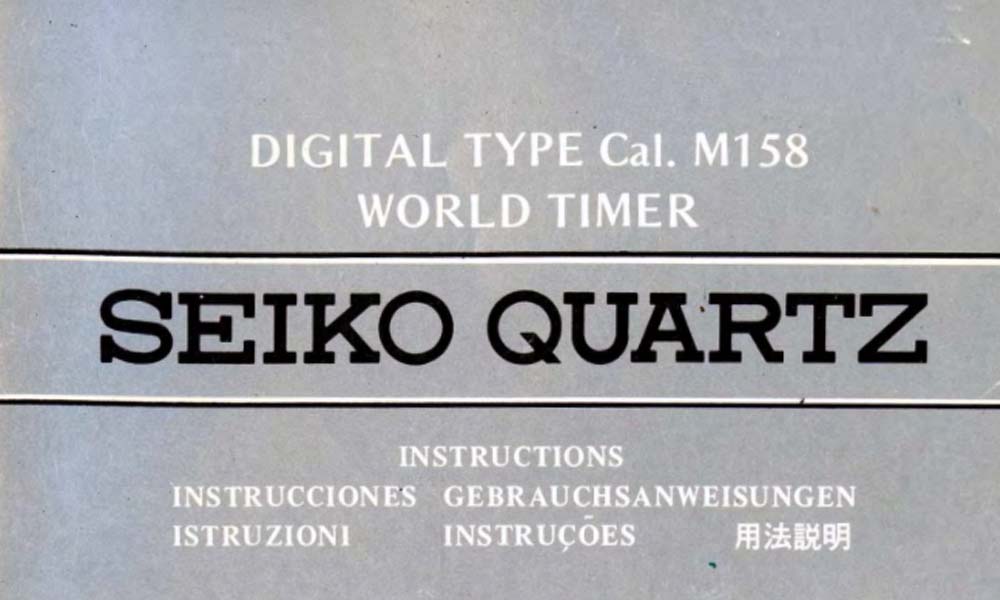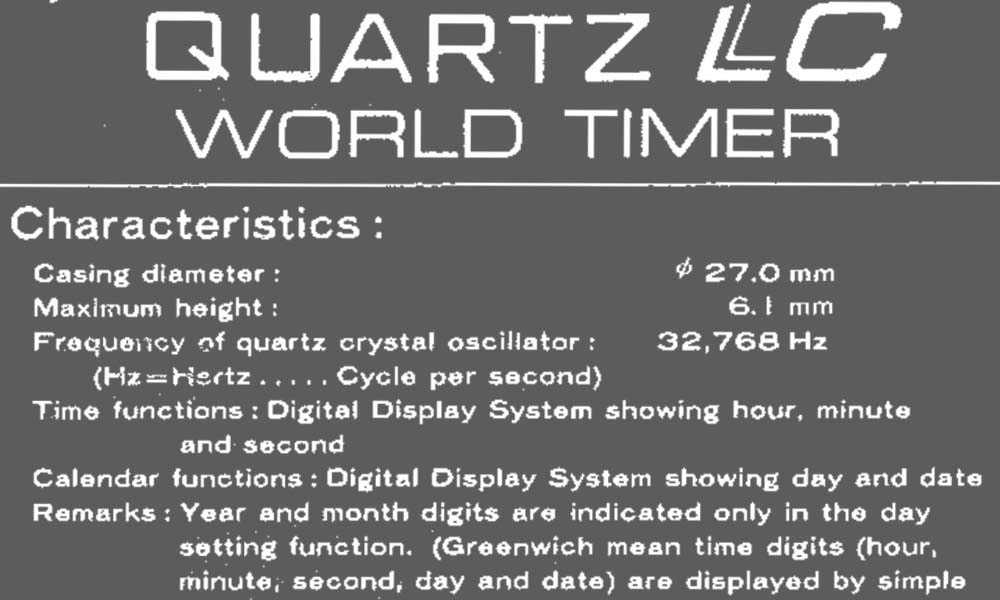The Quartz LC SEIKO World Time "PAN AM"
Model No. M158-5000 and M158-5009
In 1977 SEIKO started a new line of digital World Time watches using the latest quartz and LCD technologies.
In 1977 the SEIKO World Time was completely re-imagined using the latest in quartz and liquid crystal technology. The result was a thoroughly modern, Digital LC (Liquid Crystal) World Time offered in three varieties.
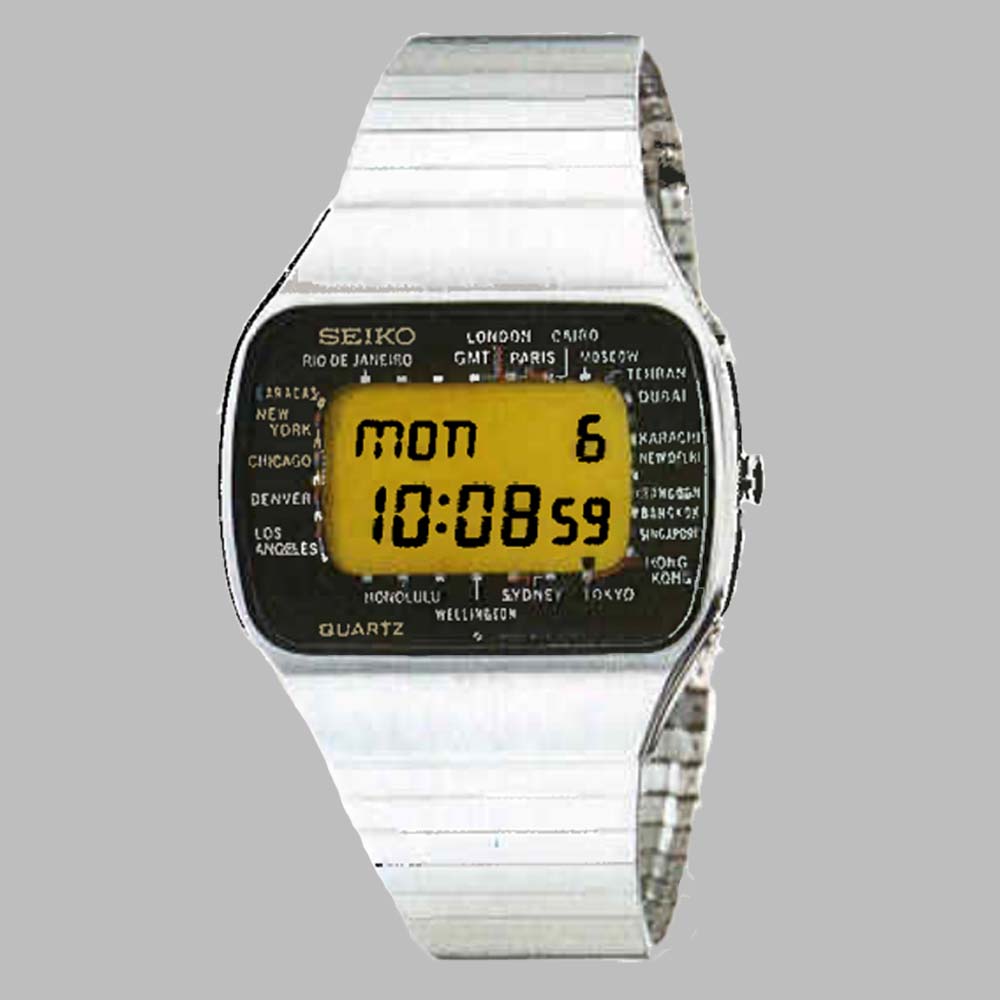
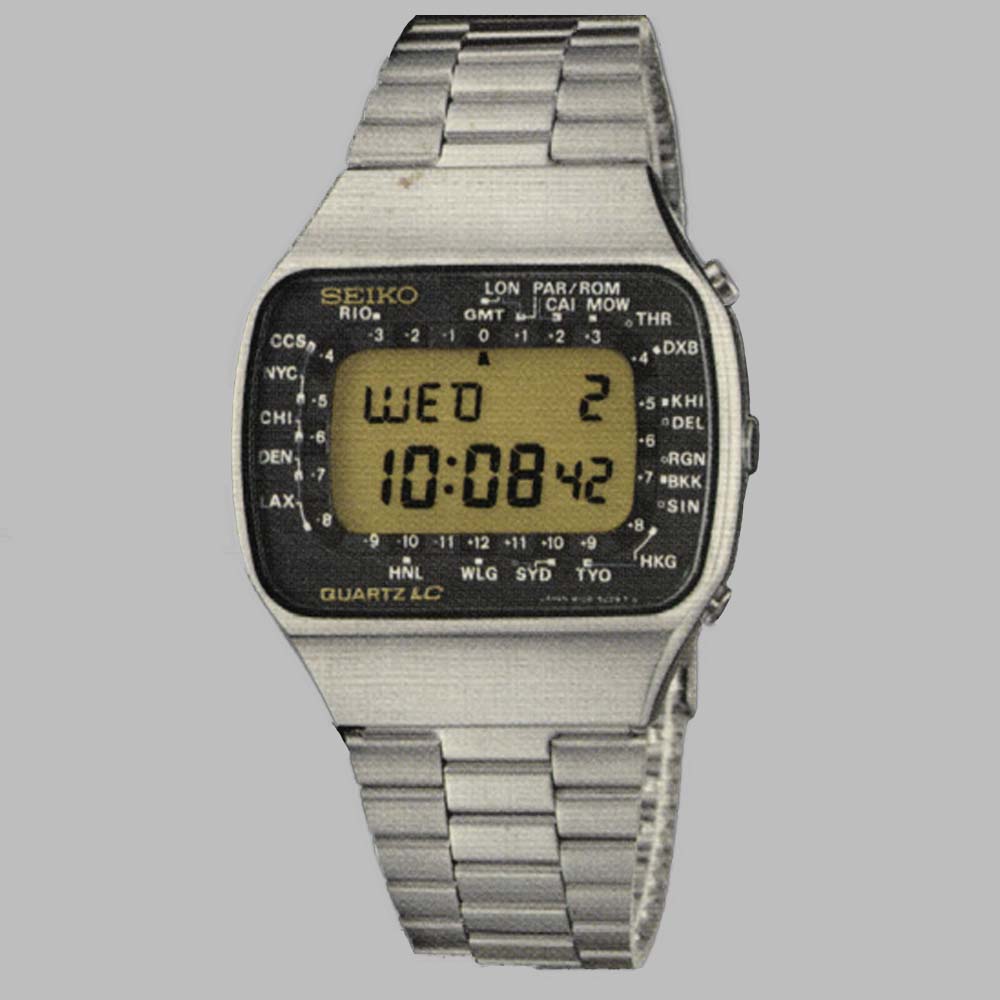
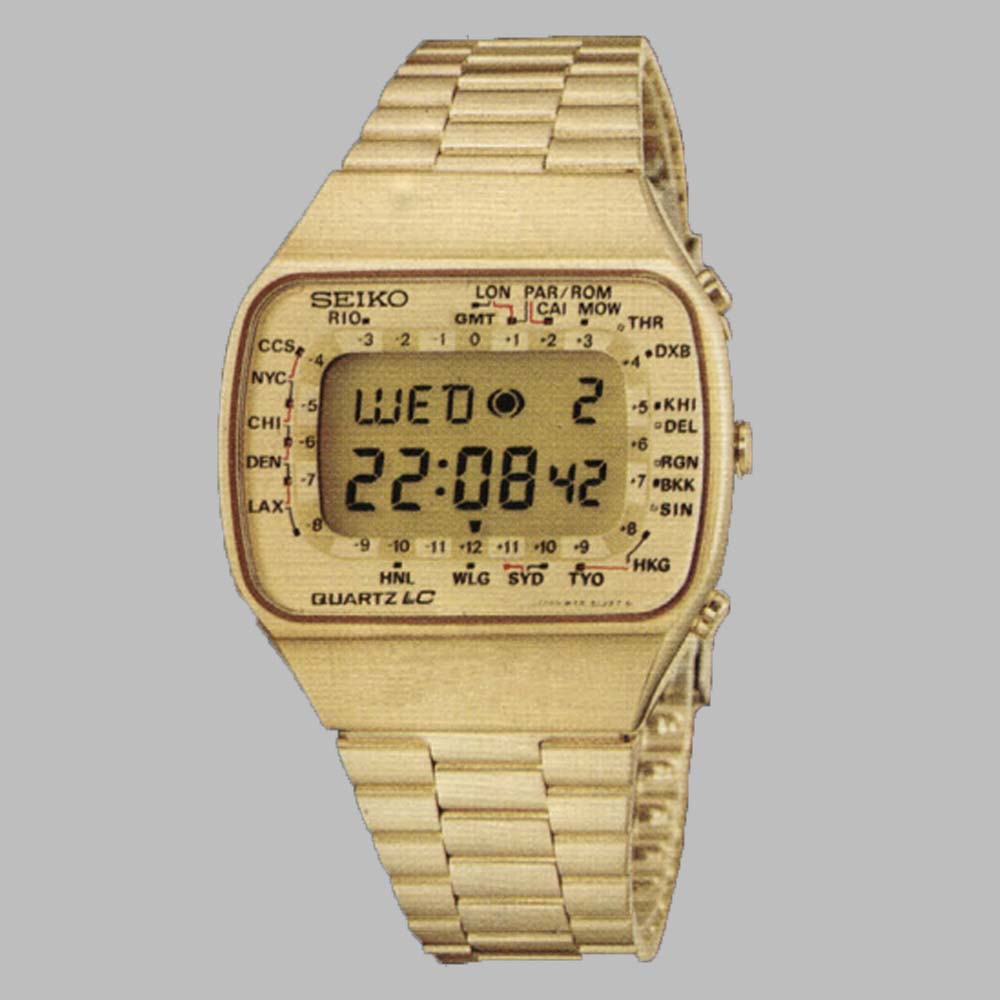
Table of Contents
- Key Statistics
- Top-Line Sales Info
- General Information
- Dial Features
- The Case
- Measurements
- The Case Back
- Dial Frames
- Original Bracelets
- Production Numbers
- Resale Value
- Other Resources
- Video on how to use the watch
- Related Articles
Key Statistics
37mm
Watch Case Size w/o Crown
40mm
Lug to Lug Measurement
Common
Rarity Index Among Cataloged Examples is 2.6 out of 10
57
Total Examples Cataloged
30.0%
Percentage of all Cataloged Digital Examples
Top-line Sales Info
- 37mm stainless steel case
- 40mm lug to lug
- World Time complication: keeps time in 29 times zones around the world and accounts for both time and date of each
- GMT Multi-Mode: Toggle between local and any other time zone with the click of a button
- Perpetual calendar, pre-programmed to account for varying length months and leap years until 2009
- Built-in illumination system
- +/- 10 seconds per month accuracy (2 minutes per year)
- Waterproof to 30m (100ft)
- HARDLEX mar-resist crystal
- Offered in Gold-tone w/ gilt dial frame and stainless steel w/ black dial frame
- MSRP: 45,000 YEN / $215 USD in Stainless Steel
- MSRP: $275 USD in Gold-tone
General Information
This watch came in two model numbers, with differing dial frames and bracelets. The M158-5009, intended for the North American market, had abbreviated city names and hour offset indicators and was sold on a 3 link bracelet. The M158-5000 on the other hand, was intended for sale outside of North America, with full city names, no hour offset indicators and was offered on a single link style bracelet.
The "M" at the start of the model number was used to indicate that this watch was one of SEIKO's multi-function watches. Later watches in this series have model numbers starting with "A", indicating they include an alarm complication, an option this first iteration did not offer.
Both models were offered in stainless steel. Based on the image data collected as of this writing, it appears that only the M158-5009 was offered in gold-tone.
It is said that this watch was popular among pilots of the time, both for its world time and GMT features, as well as the lemon colored LCD, which was easy to read in low light. It is commonly referred to as the SEIKO PAN AM.
It should also be noted, that while quartz and digital watches eventually became synonymous with cheap, mass produced, and unserviceable, that was not the case with these early digital watches. Not only did they sell for a significant premium over the outgoing mechanical equivalents, the components used were robust and high quality for the day. As an indication, the outgoing mechanical 6117-6400 had an MSRP of $69 USD ($99 in gold-tone metal) in 1976, whereas this digital replacement had a list price of $215 USD ($275 in gold-tone) in 1977.
More than 40 years later, examples of these watches can be found running with the same precision and legibility they offered when new.
Dial Features
The liquid crystal display includes a day/date complication and a quick toggle to change between a reference time and the local time, which is a digital equivalent of a GMT feature. Here is an overview of the dial features transplanted from an SEIKO catalog page of the North American version.
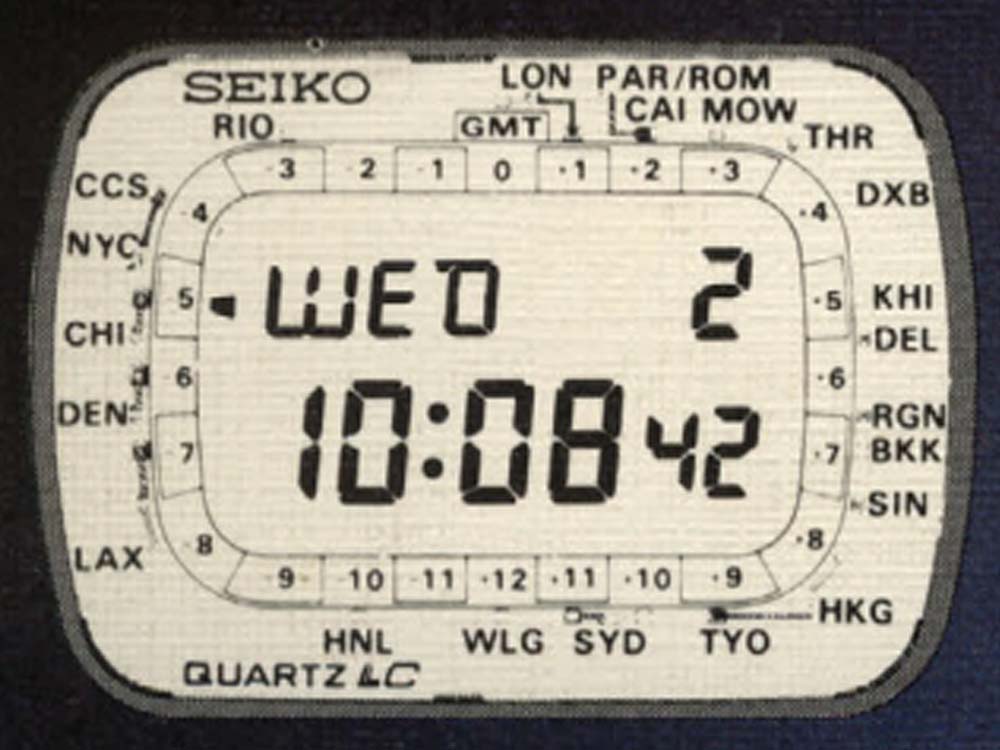
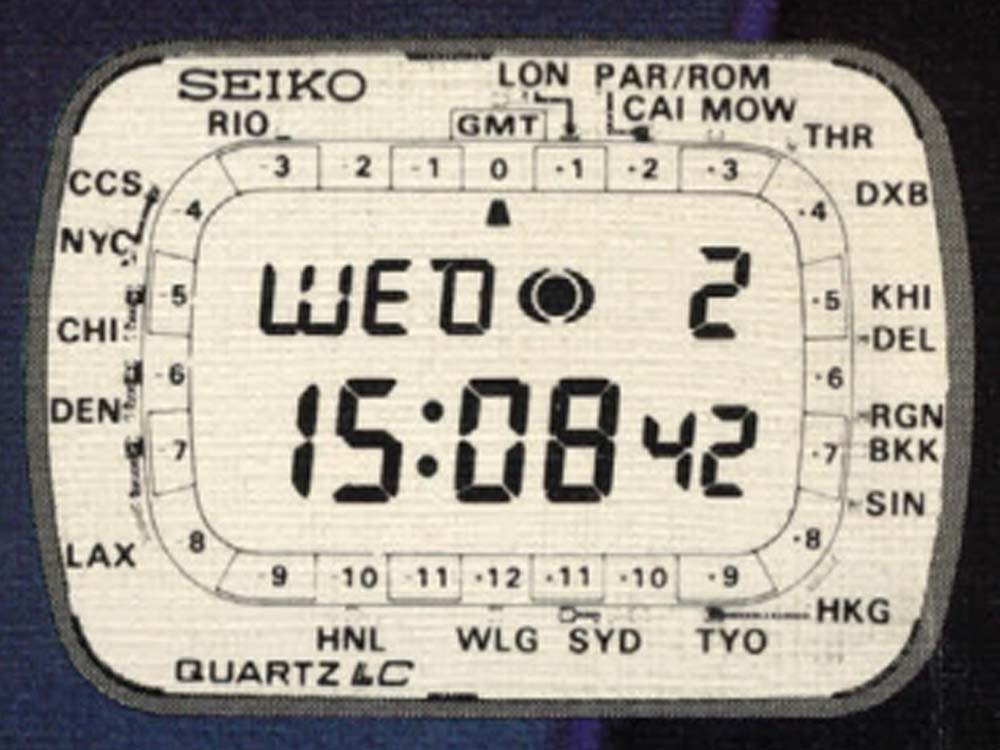
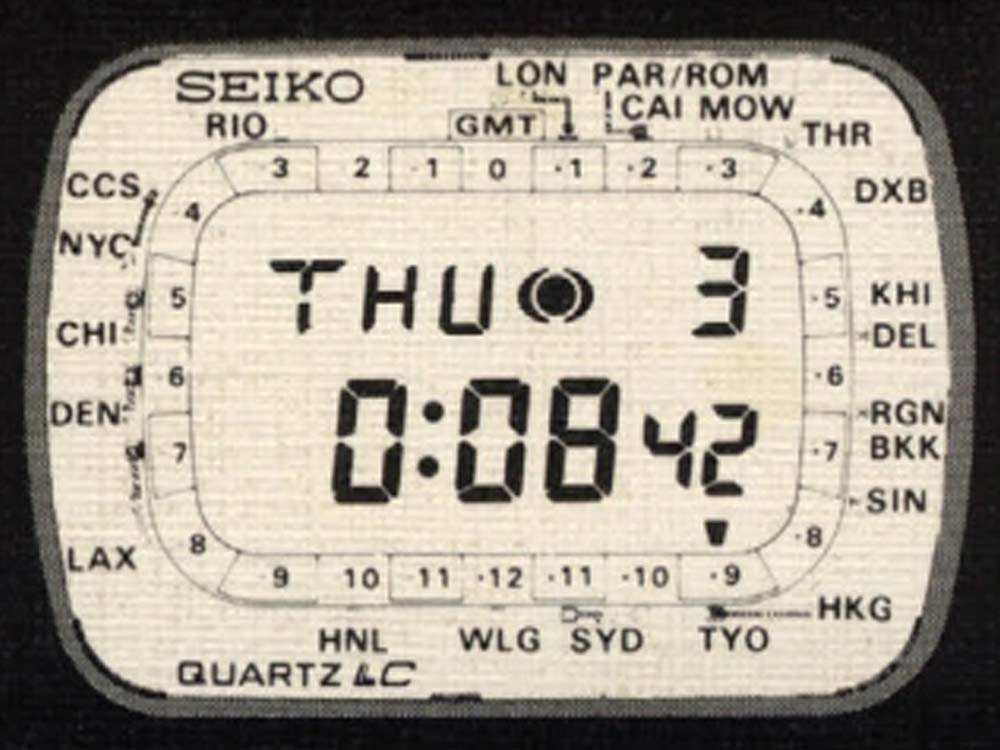
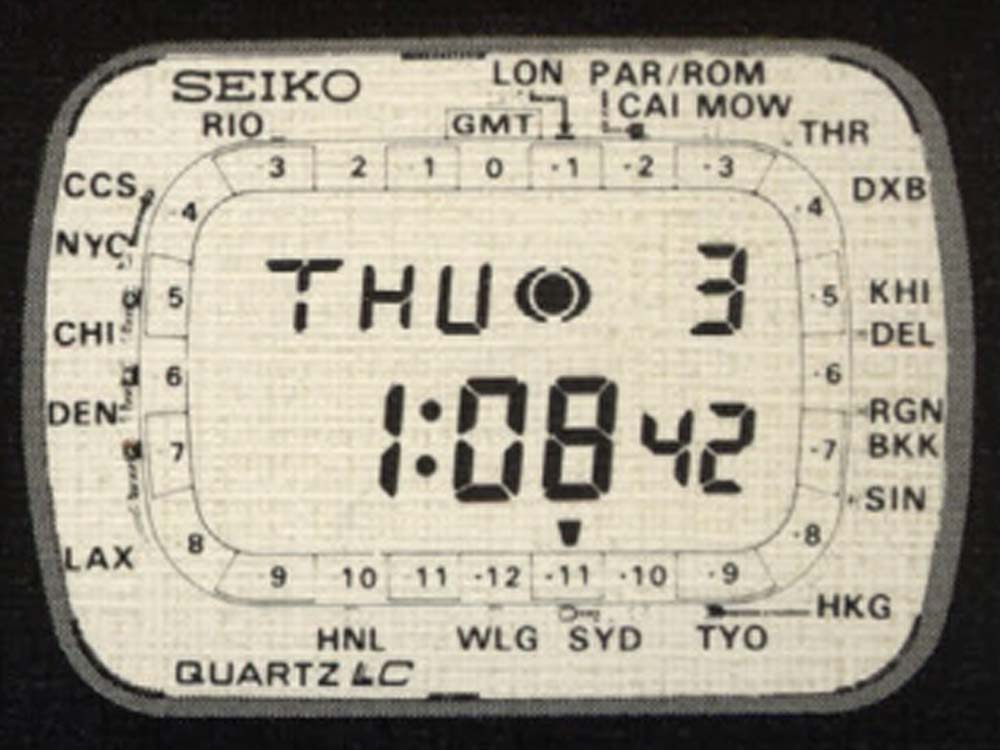
The Case
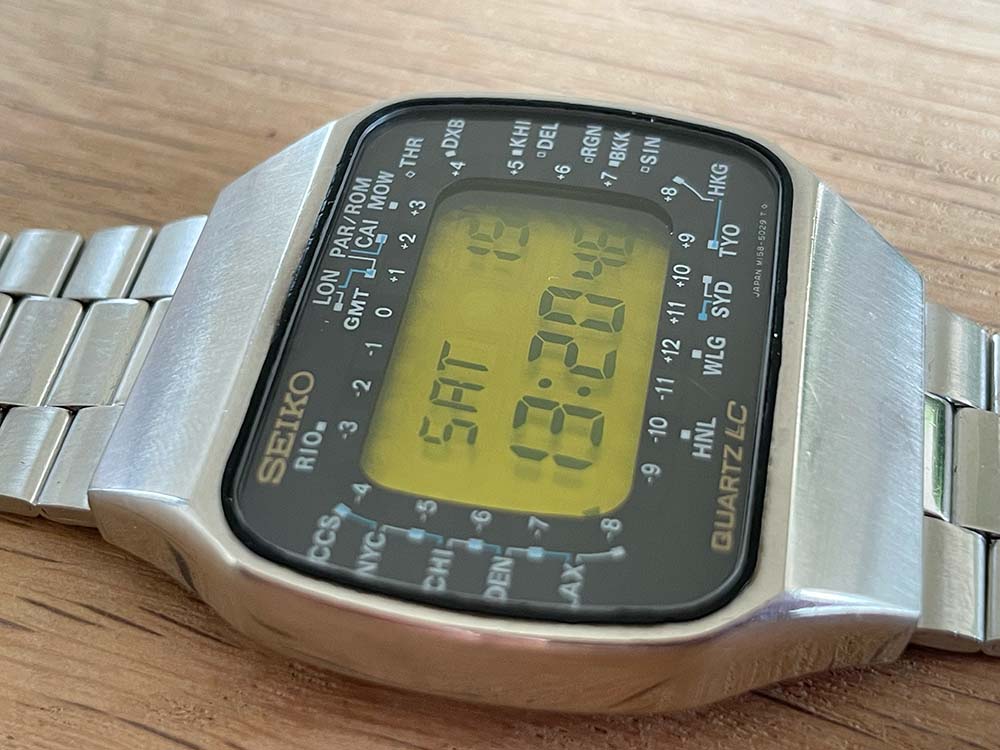
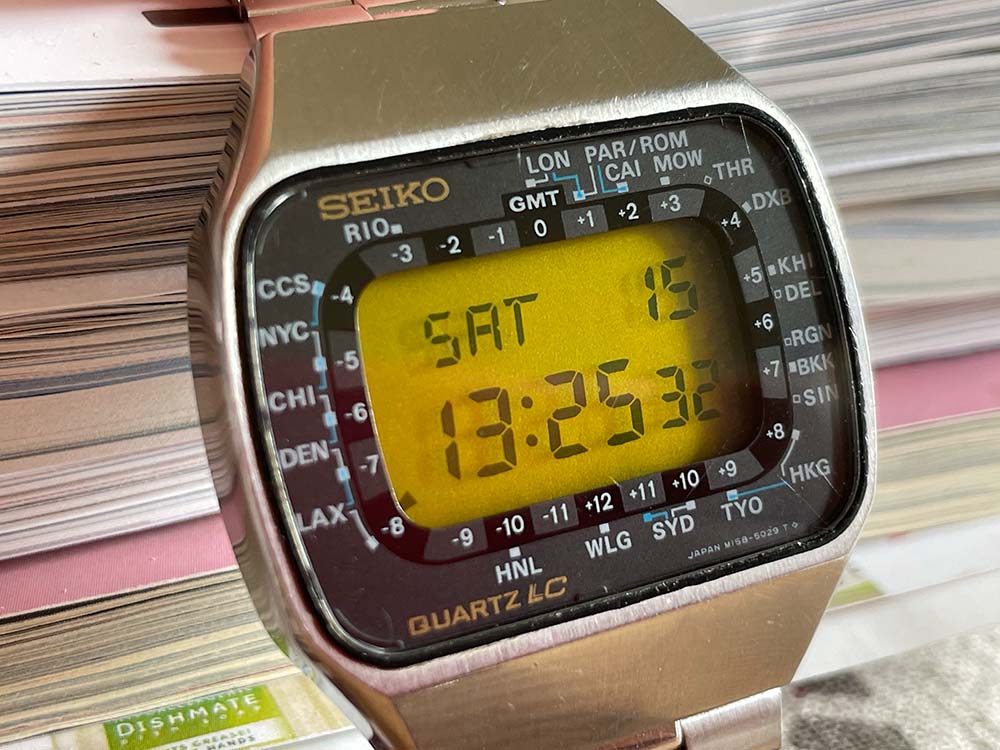
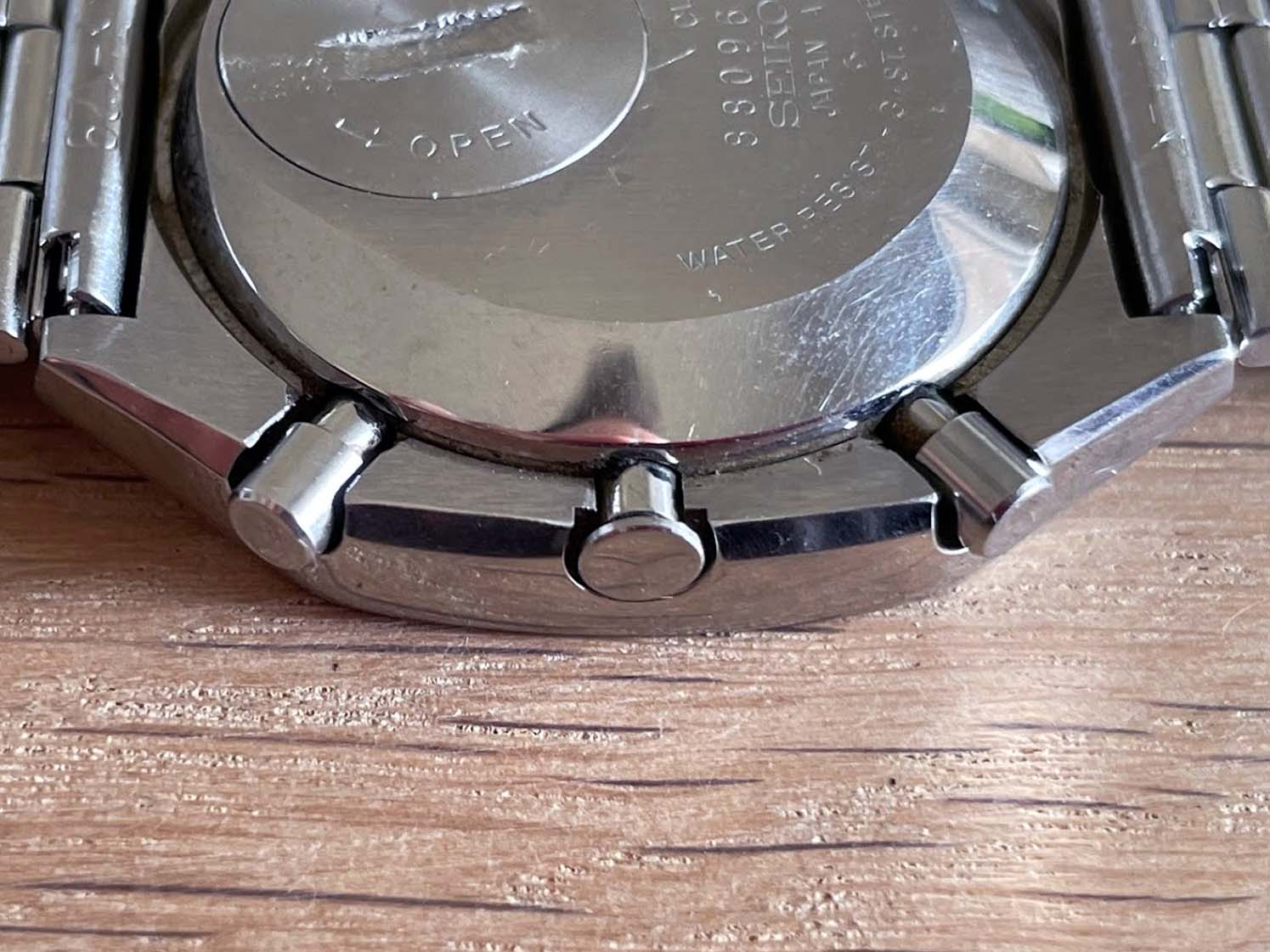
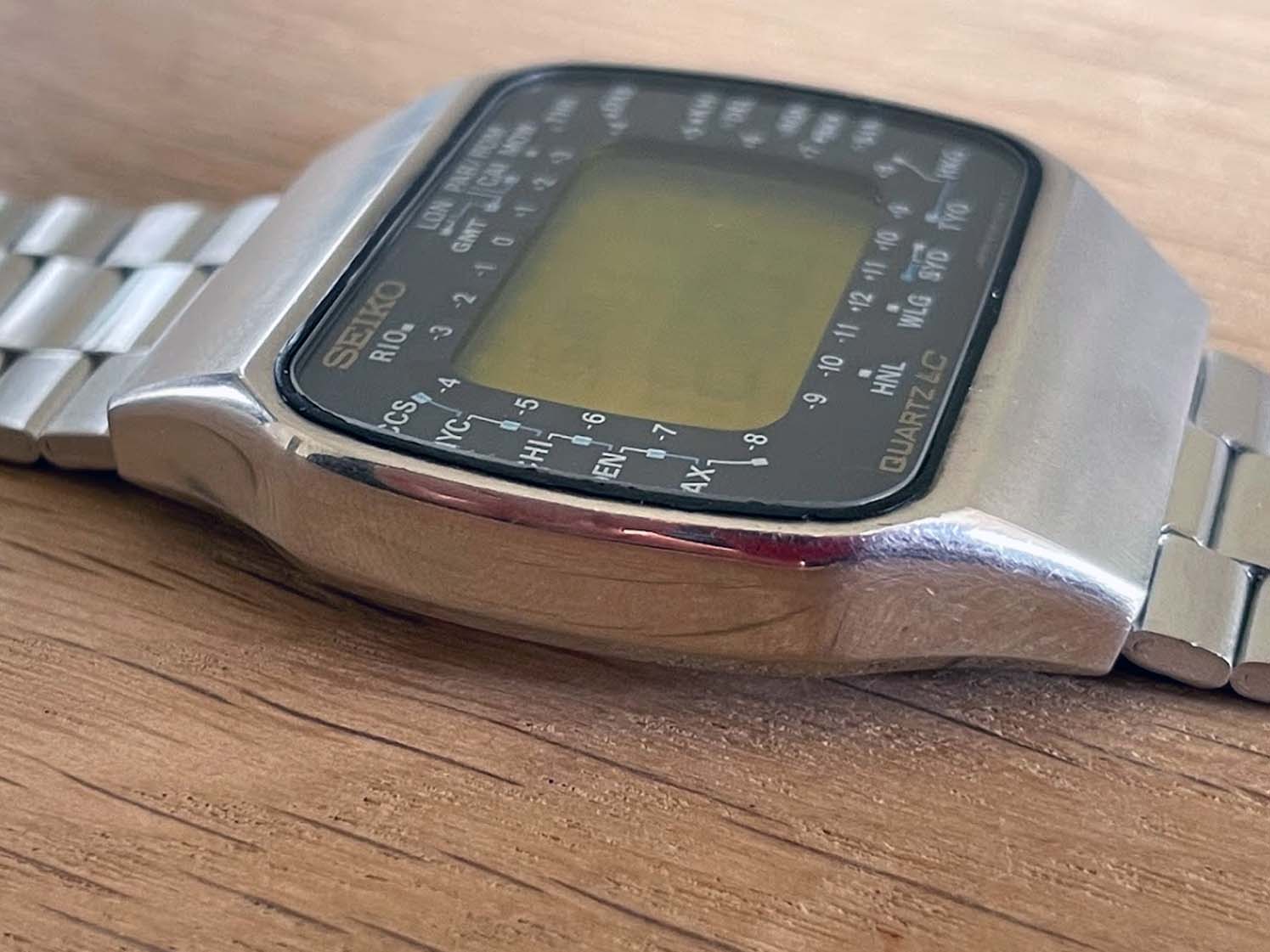
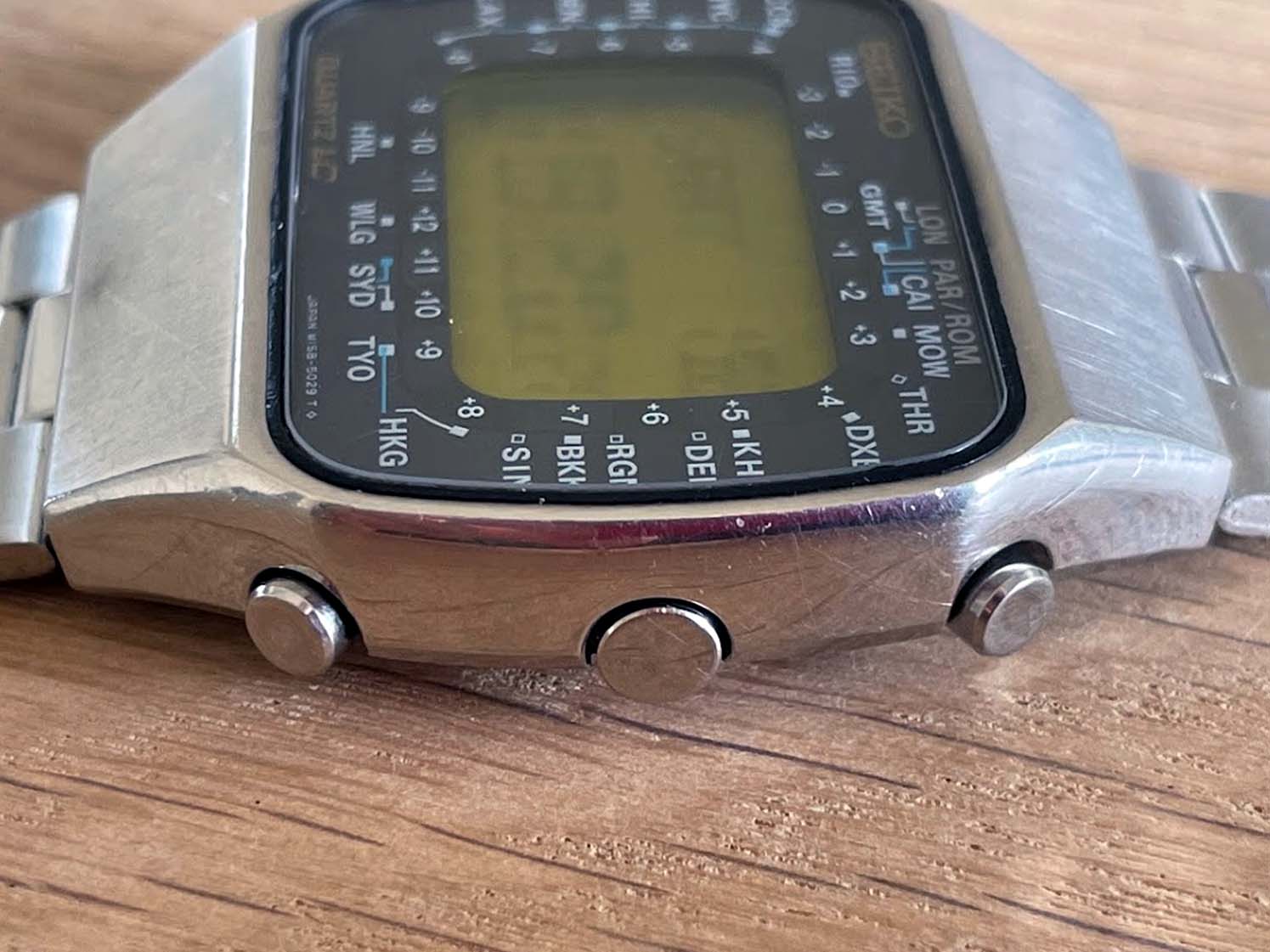
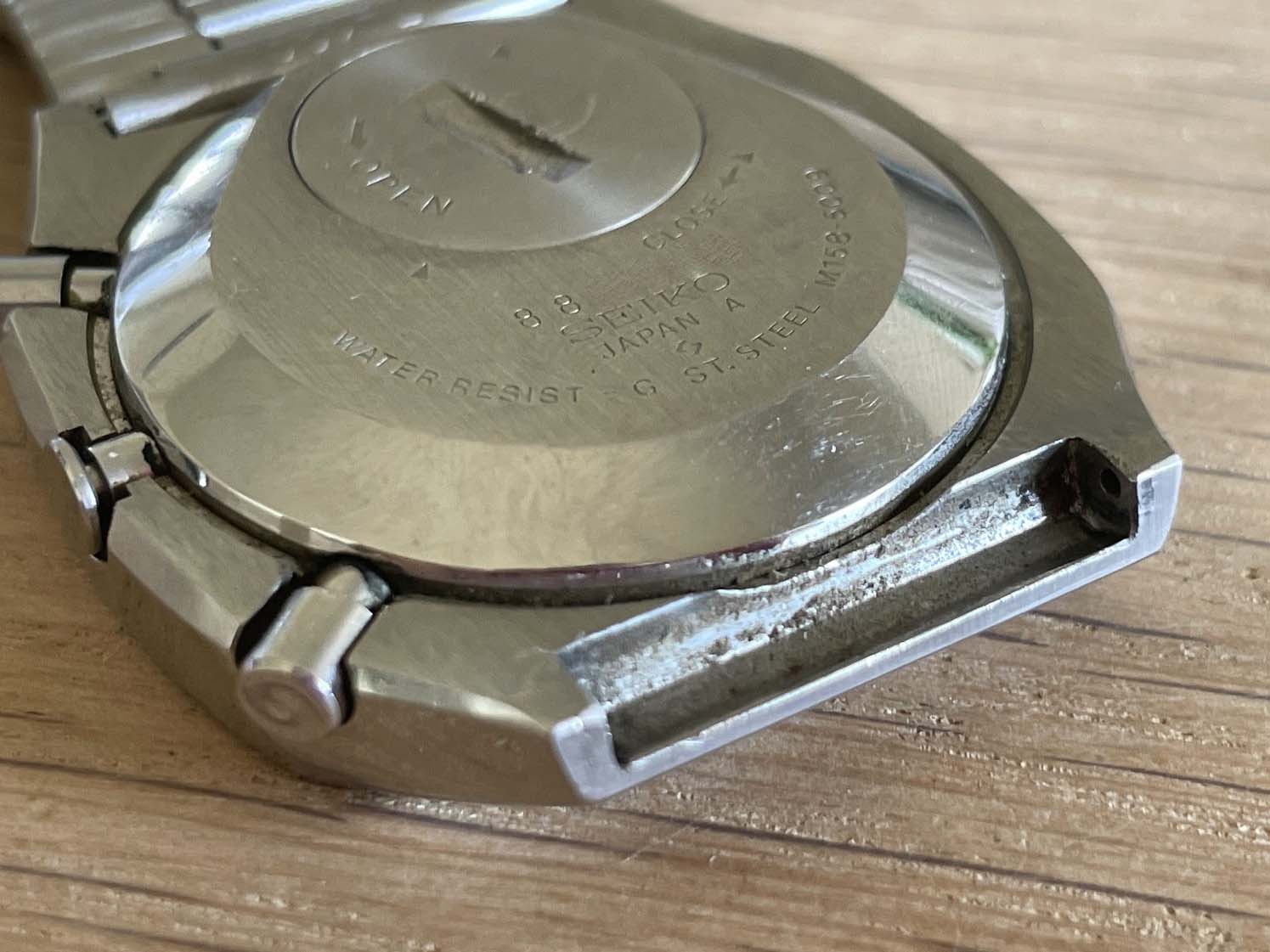
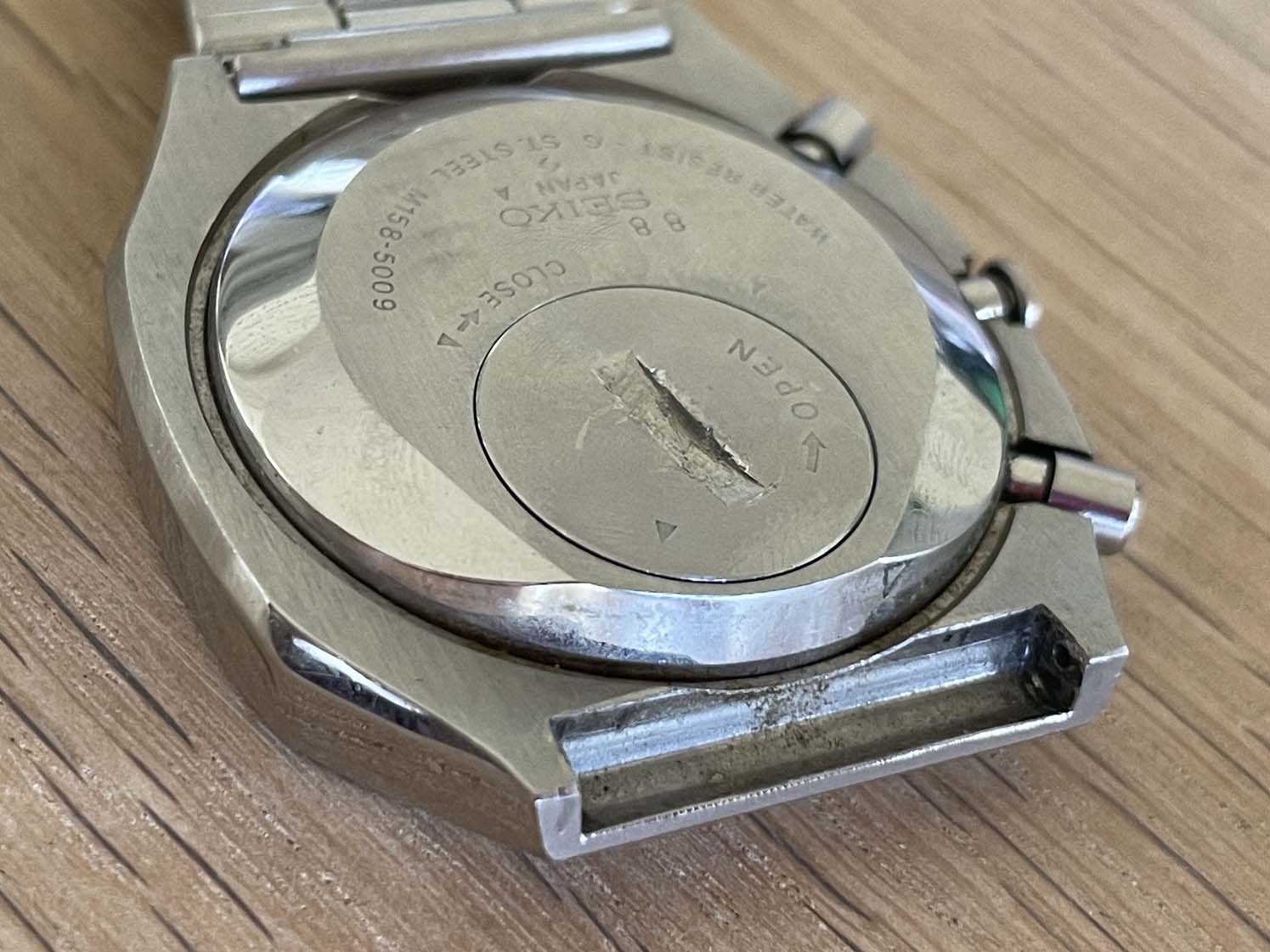
Measurements
Here are approximate measurements.
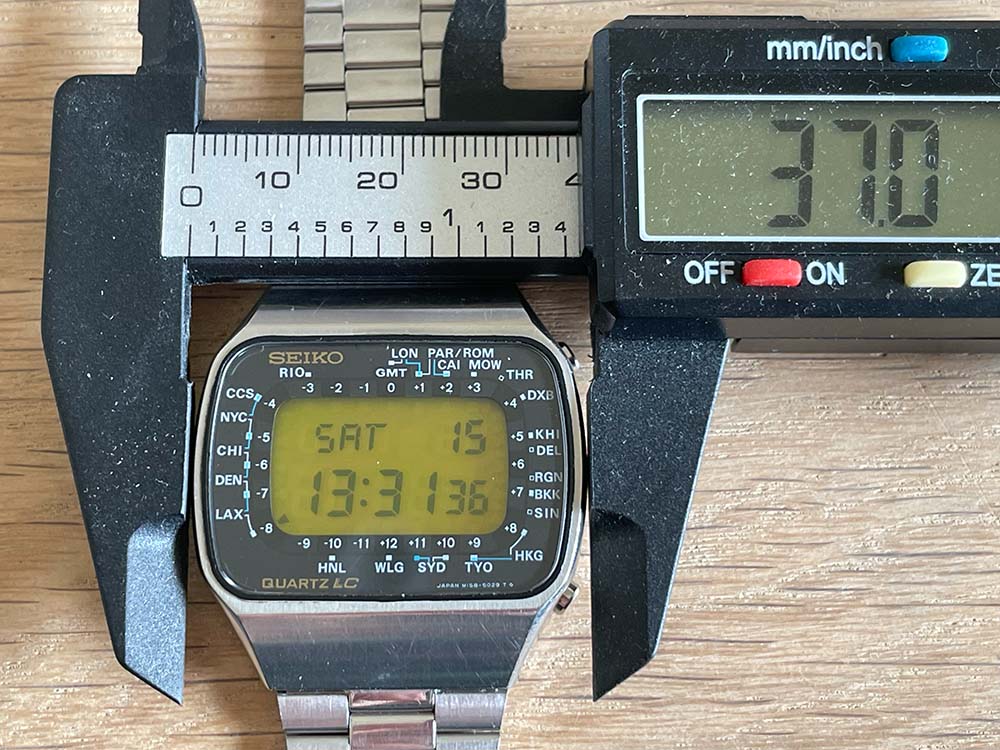
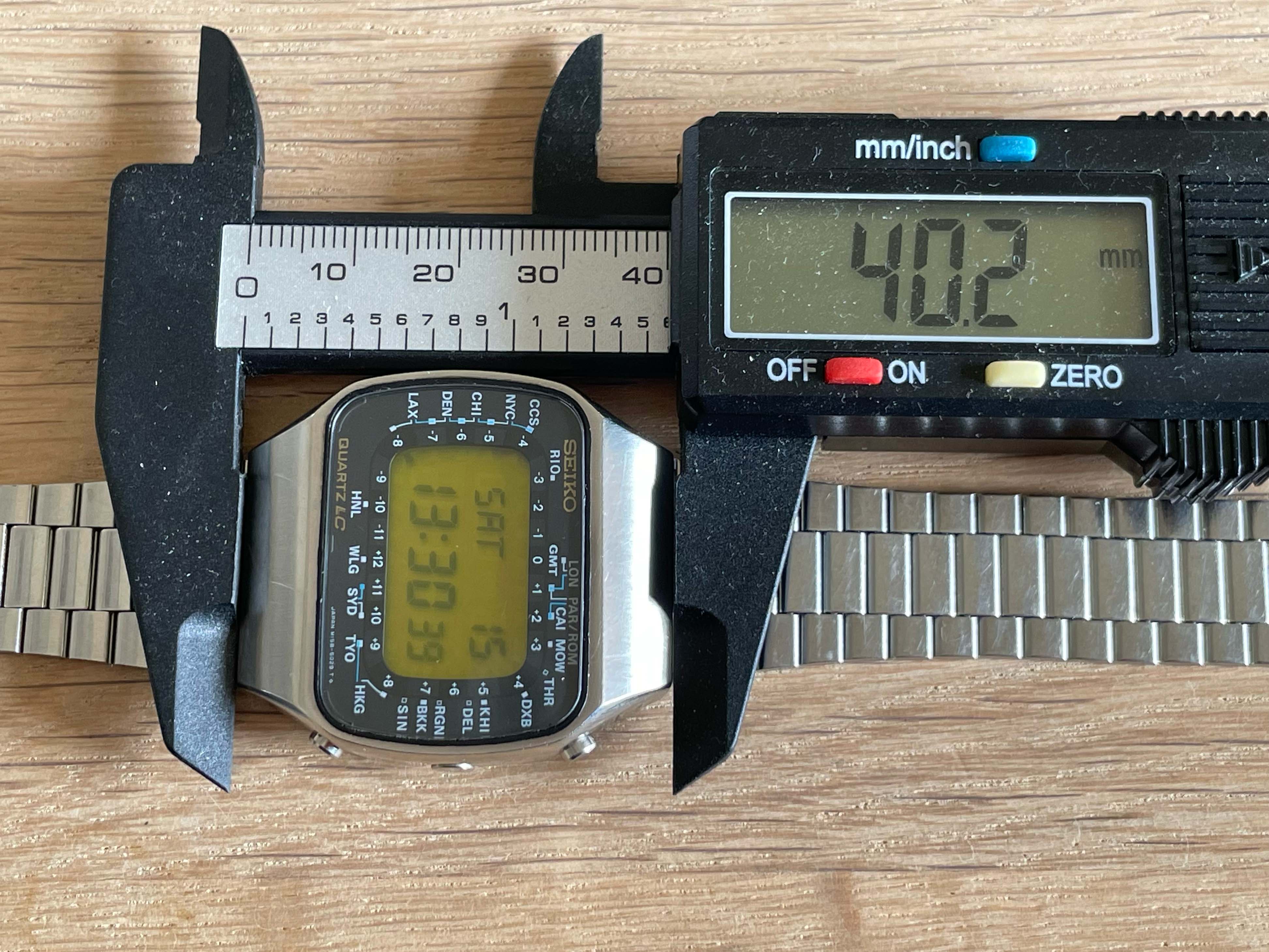

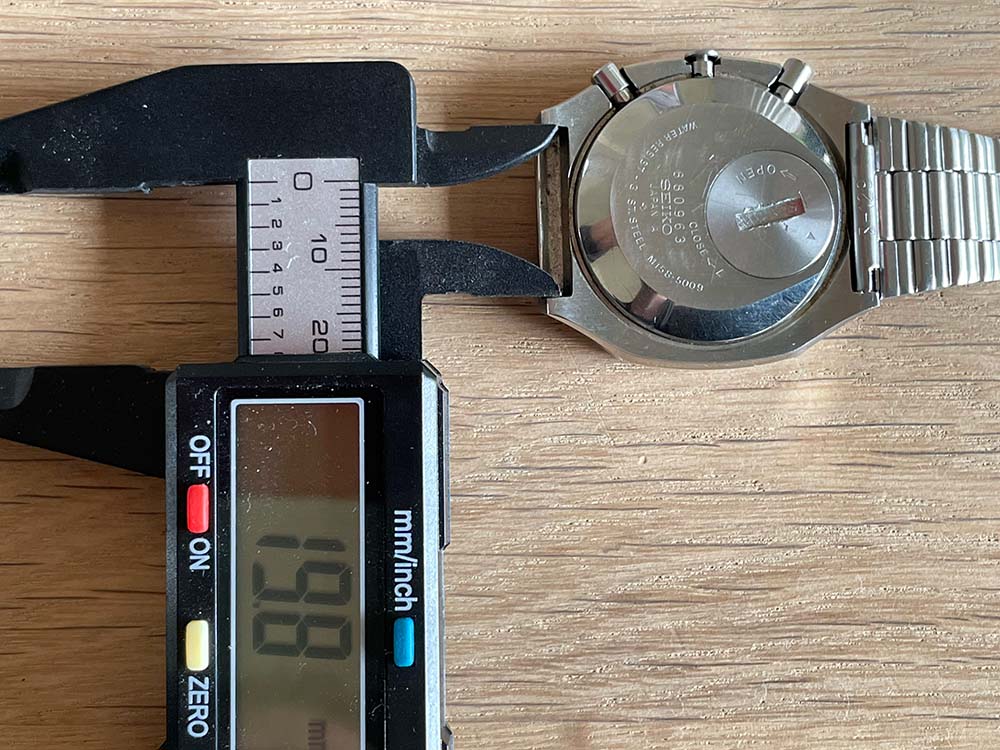
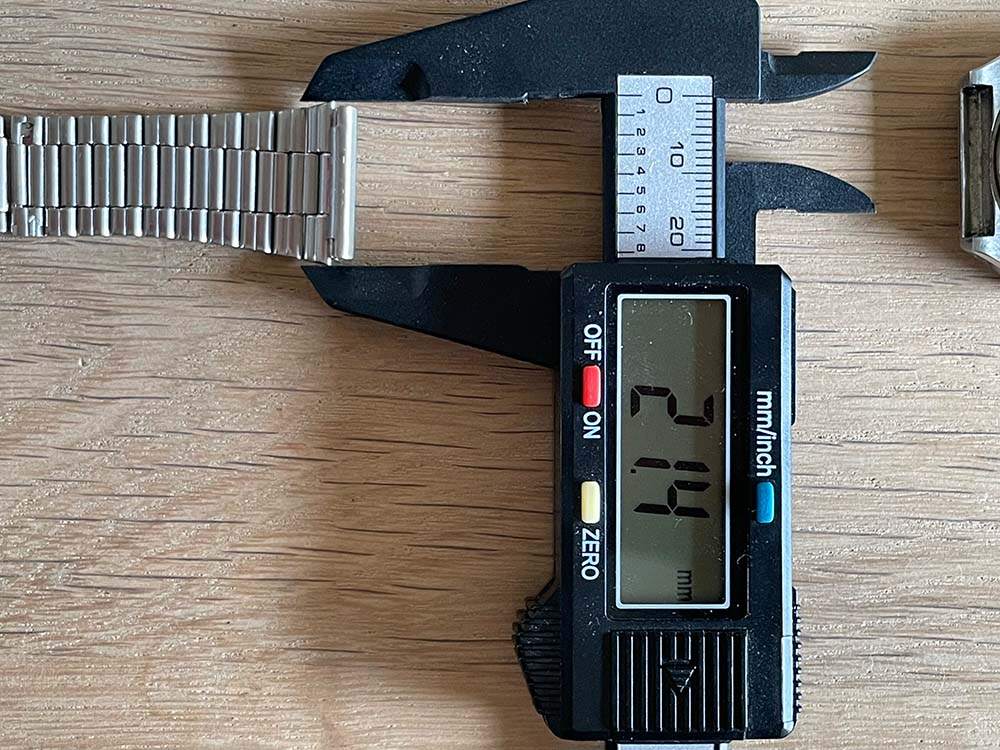
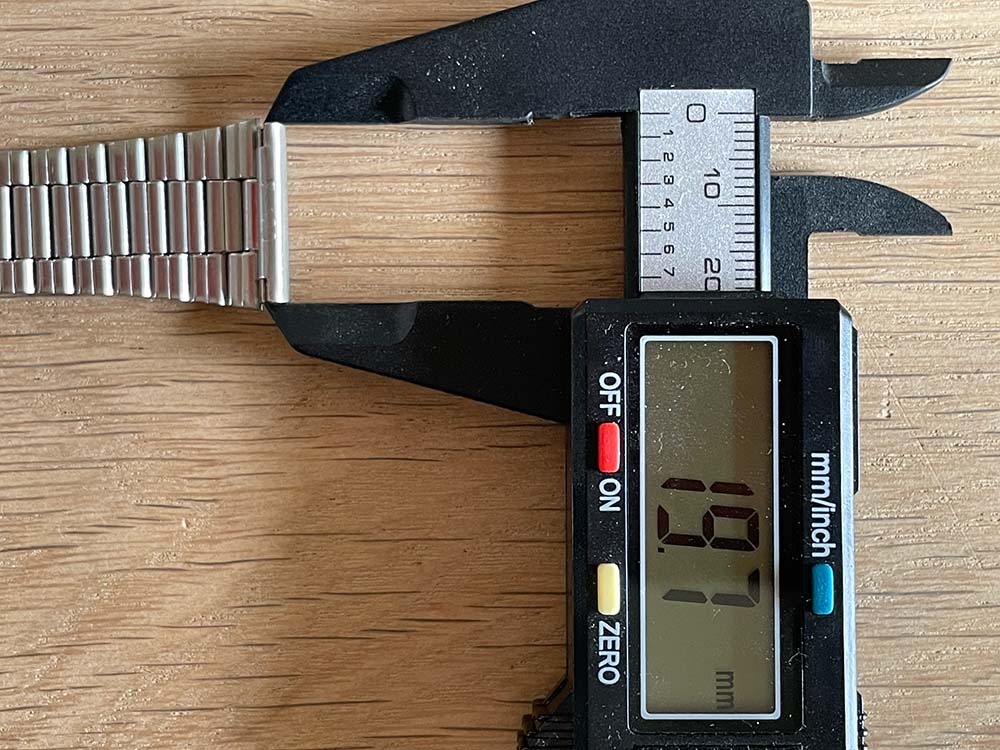
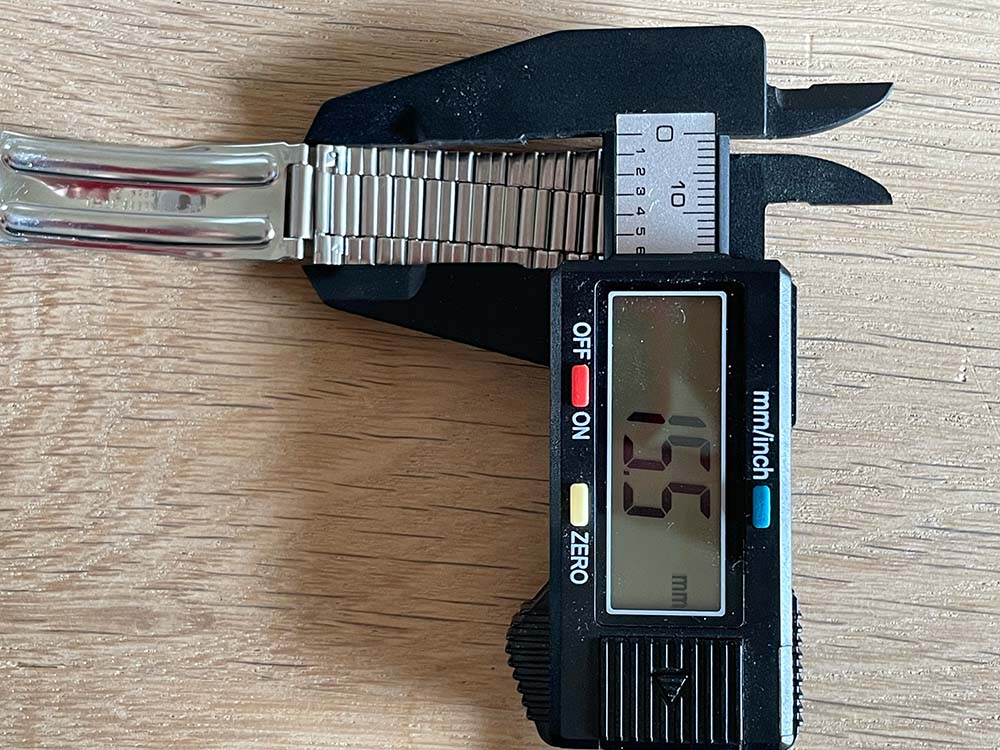
The Case Back
The case back design and wording is similar for both model numbers and color options. There is a screw down battery replacement door, and the case back itself is of the snap-on variety.
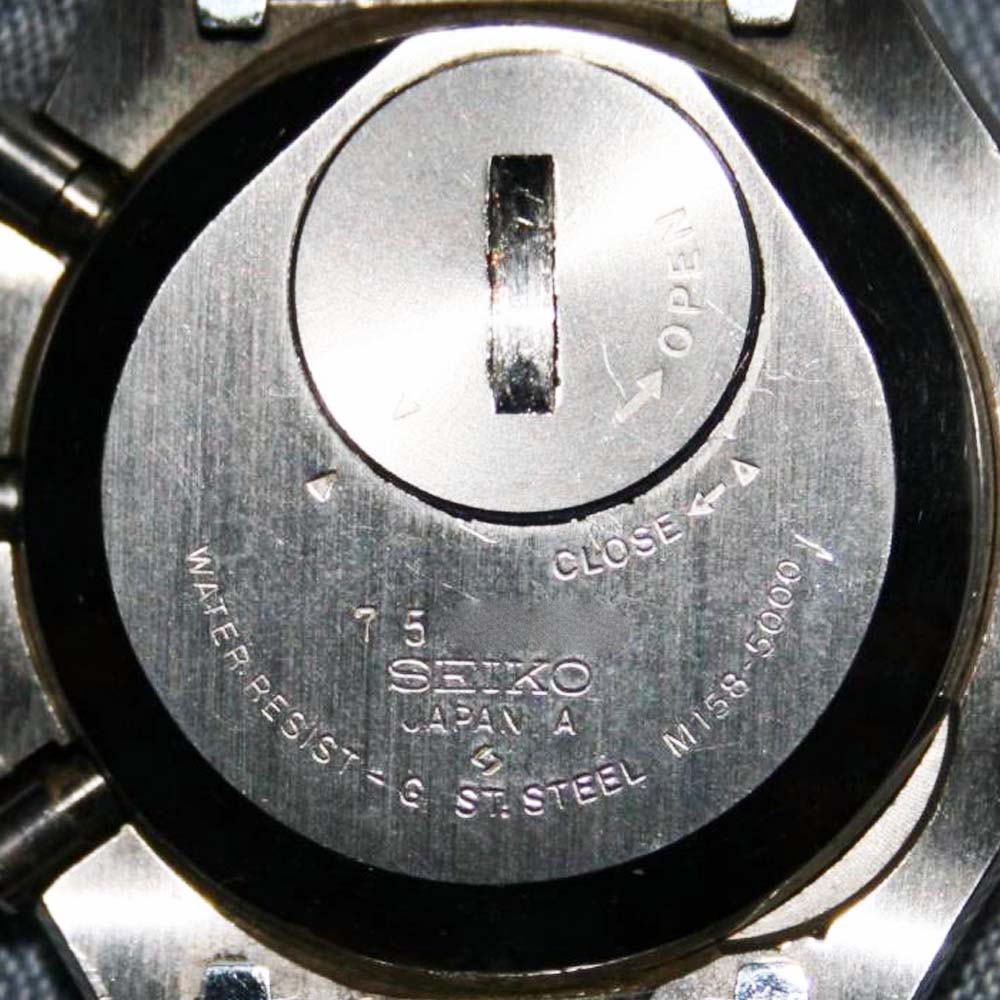
S/N, SEIKO, JAPAN A, WATER RESIST - G ST. STEEL M158-5000
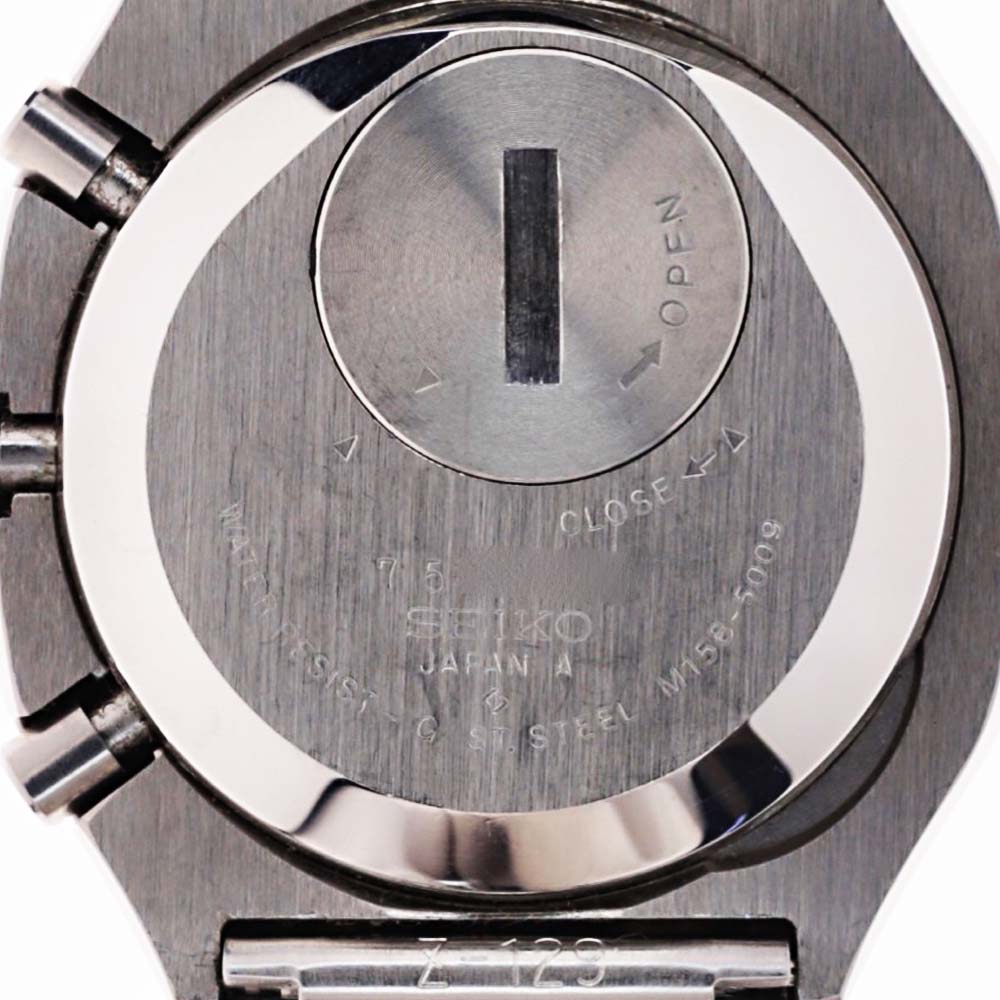
S/N, SEIKO, JAPAN A, WATER RESIST - G ST. STEEL M158-5009
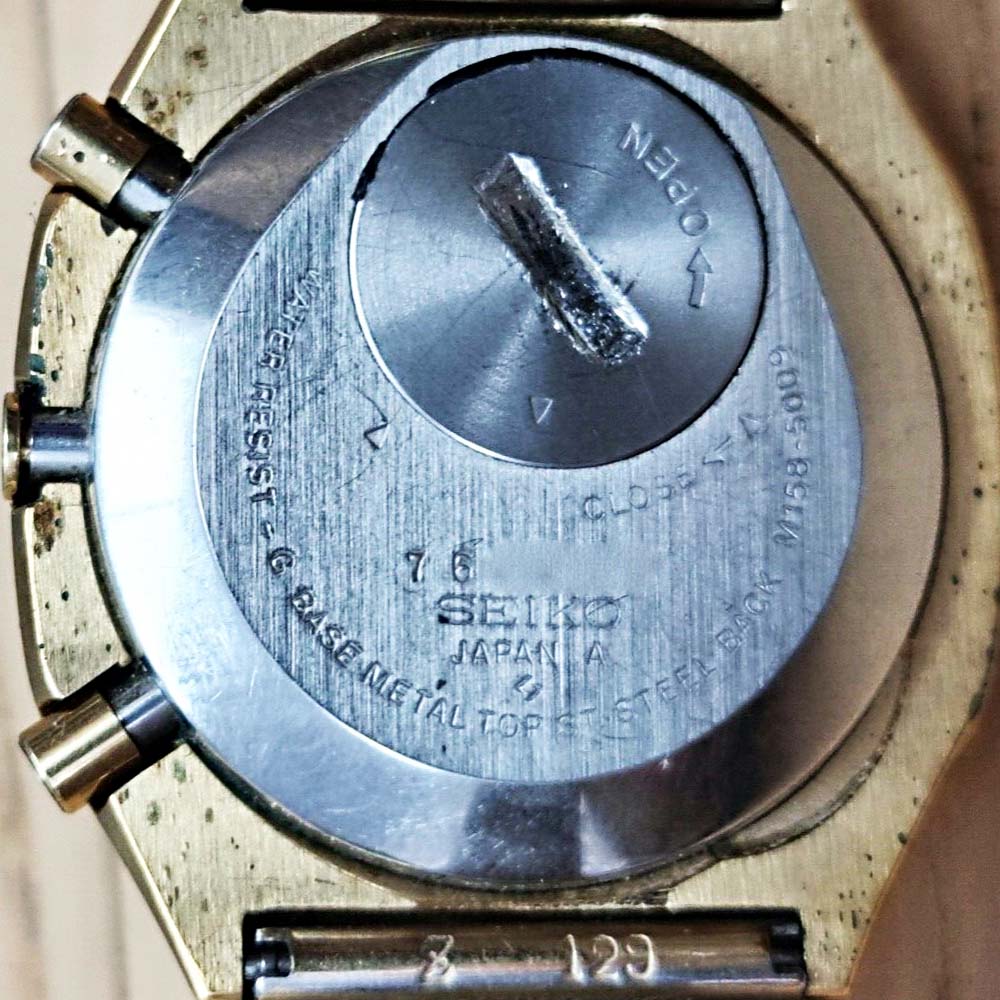
S/N, SEIKO, JAPAN A, WATER RESIST - G BASE METAL TOP ST. STEEL BACK M158-5000
Note the case back has a teardrop shape that leans slightly to the right when viewed on center.
Dial Frames
Here are the three different dial frames.
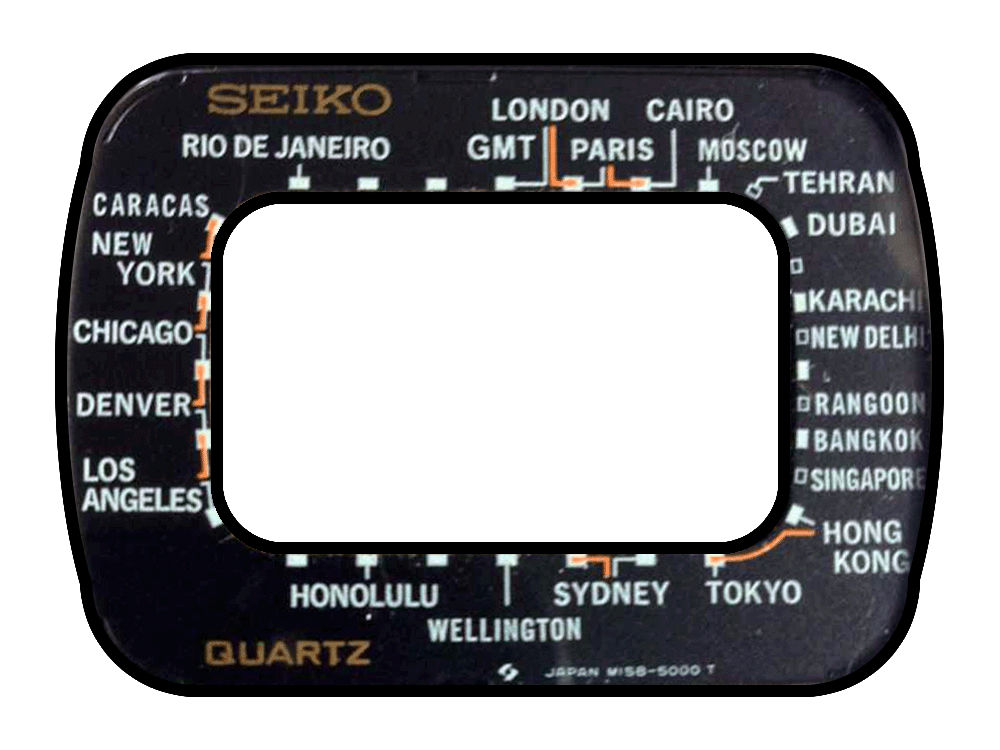
Dial Code: M158-5000 T
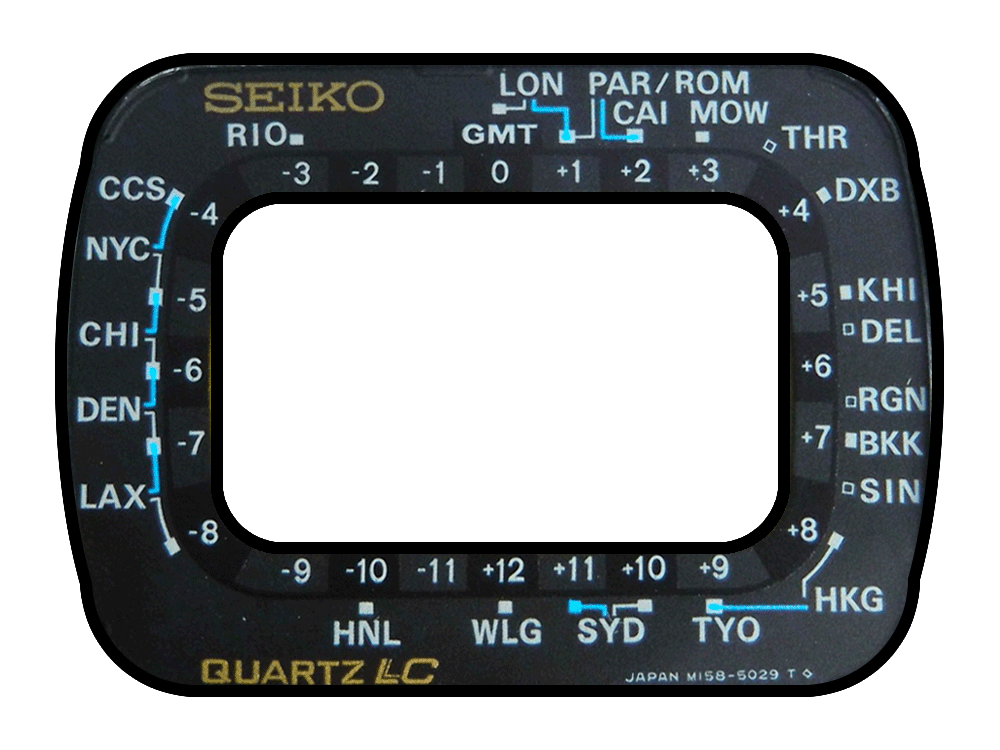
Dial Code: M158-5029 T
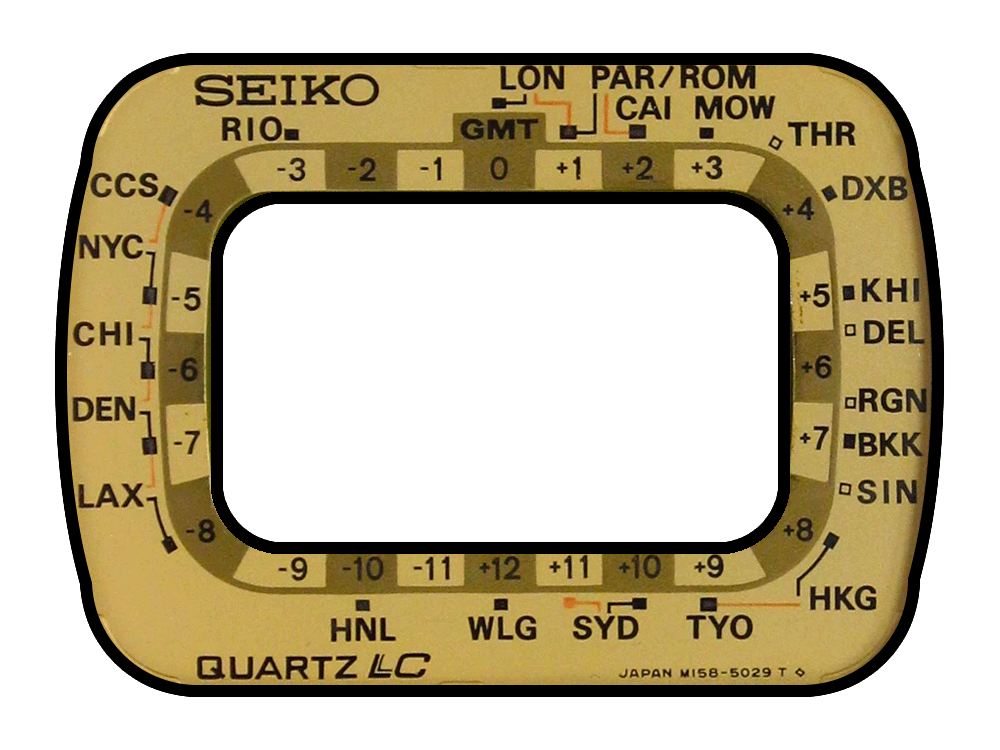
Dial Code: M158-5029 T
The 5000 is marked QUARTZ vs QUARTZ LC on the 5009.
Original Bracelets
The M158-5000 Bracelet
The Japanese / International version of the M158 was offered on a modern, single link design bracelet. A sliding clasp allows the bracelet to be resized without removing links.
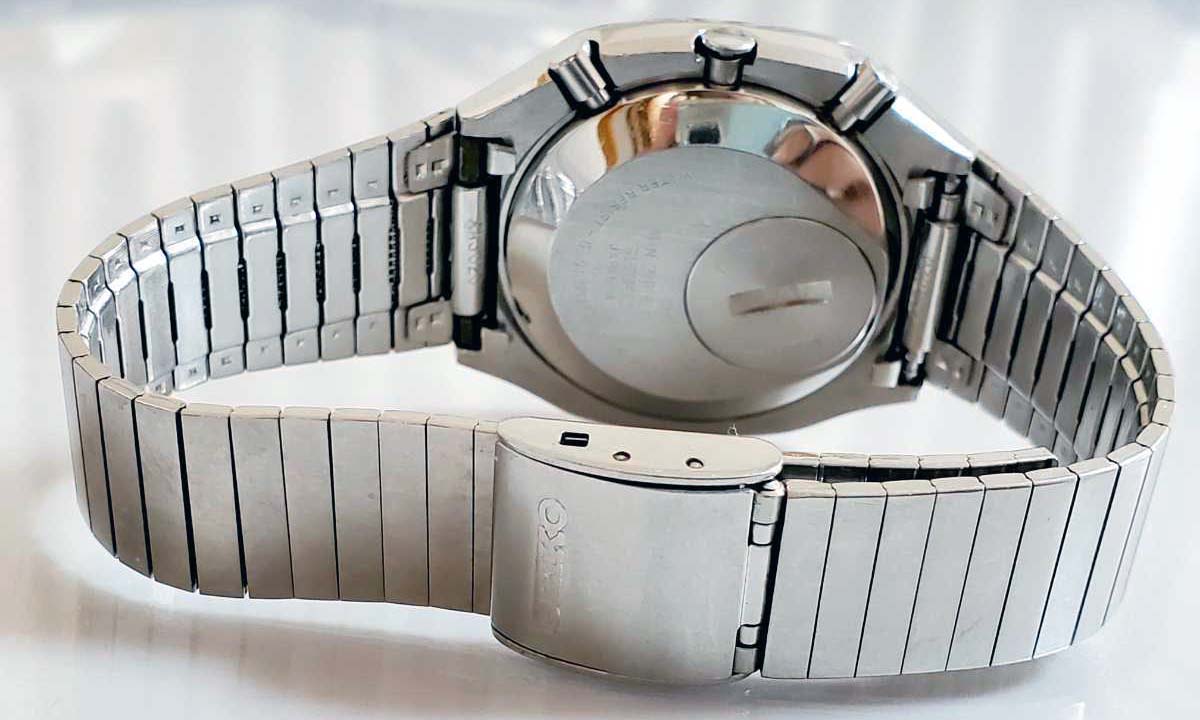
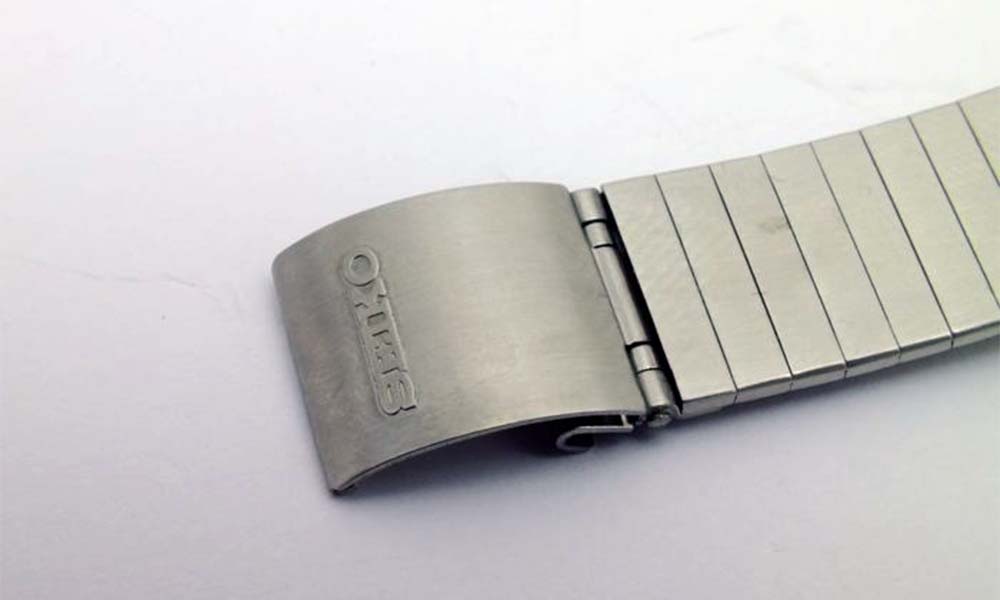
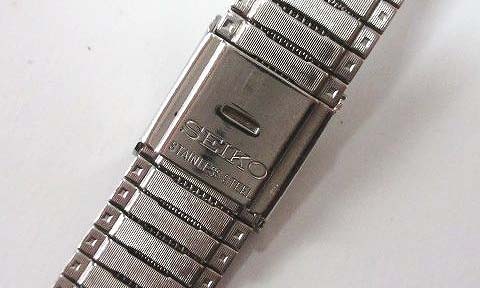
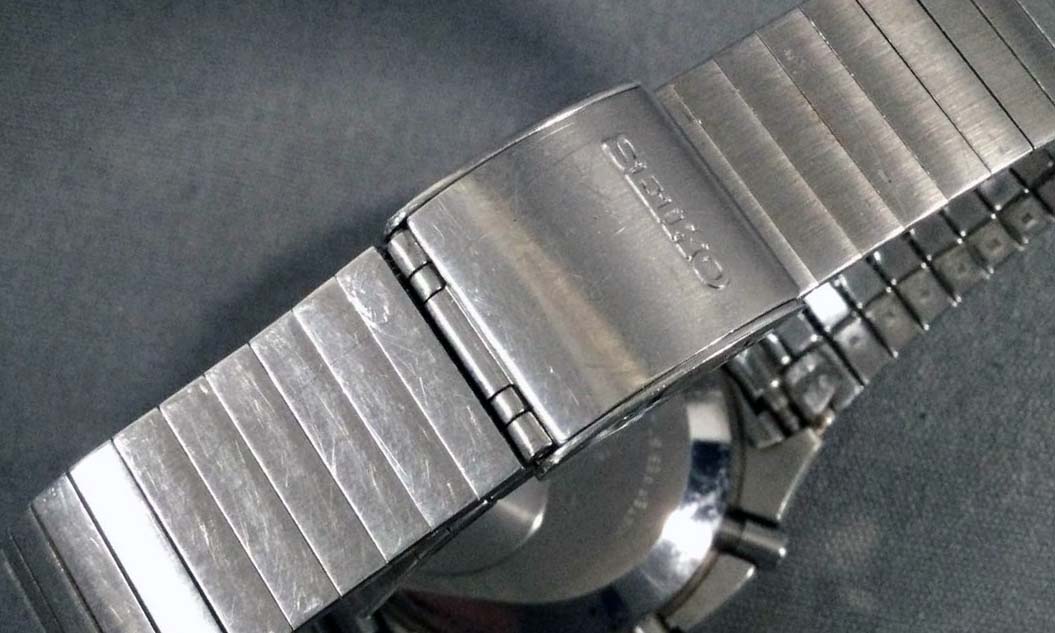
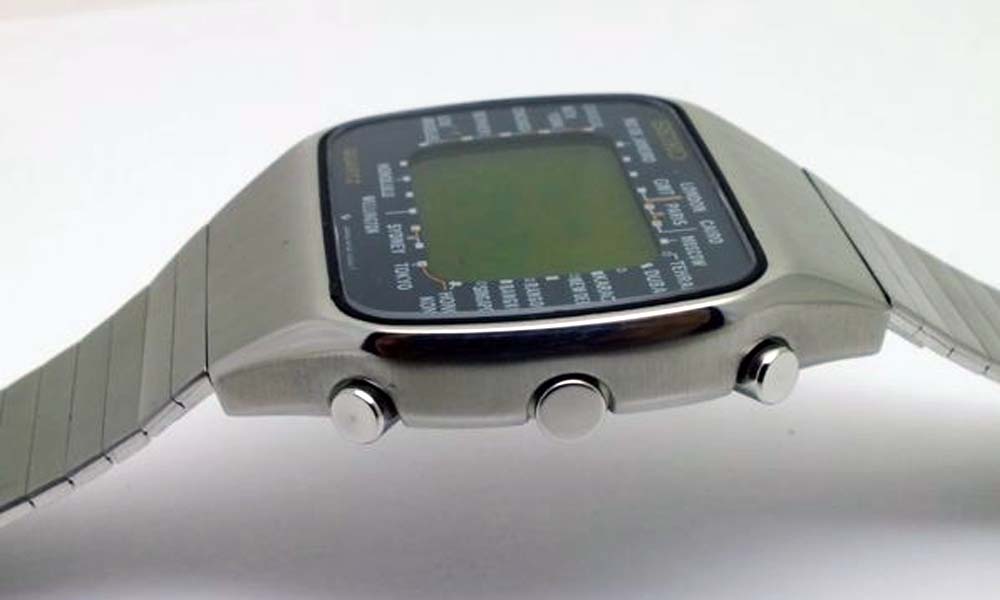
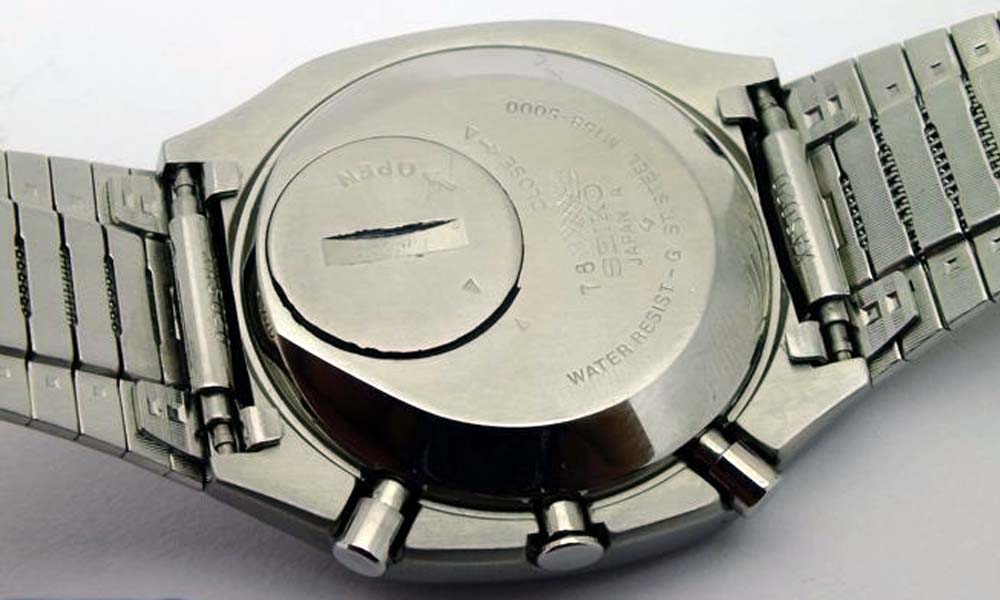
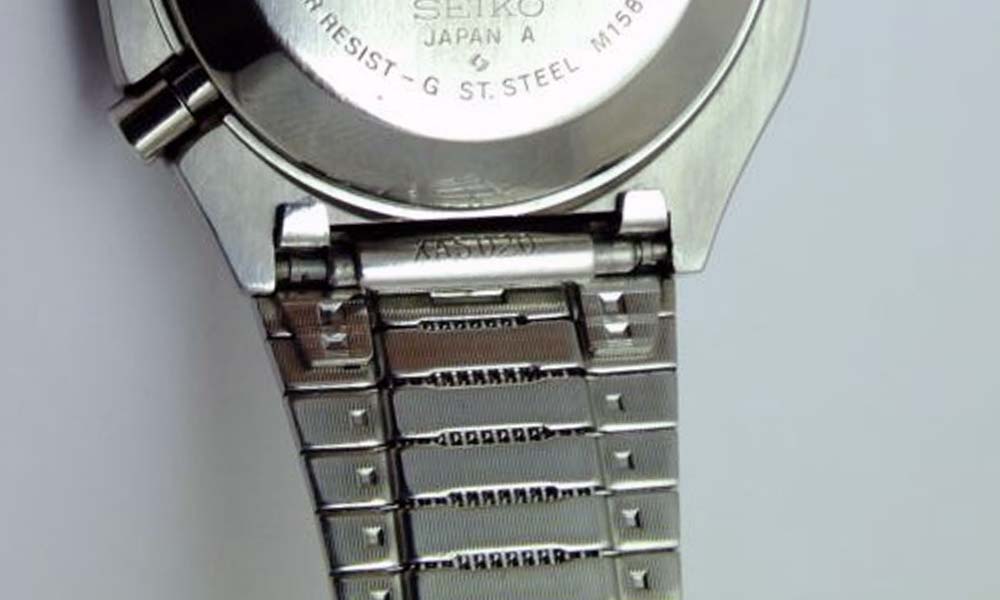
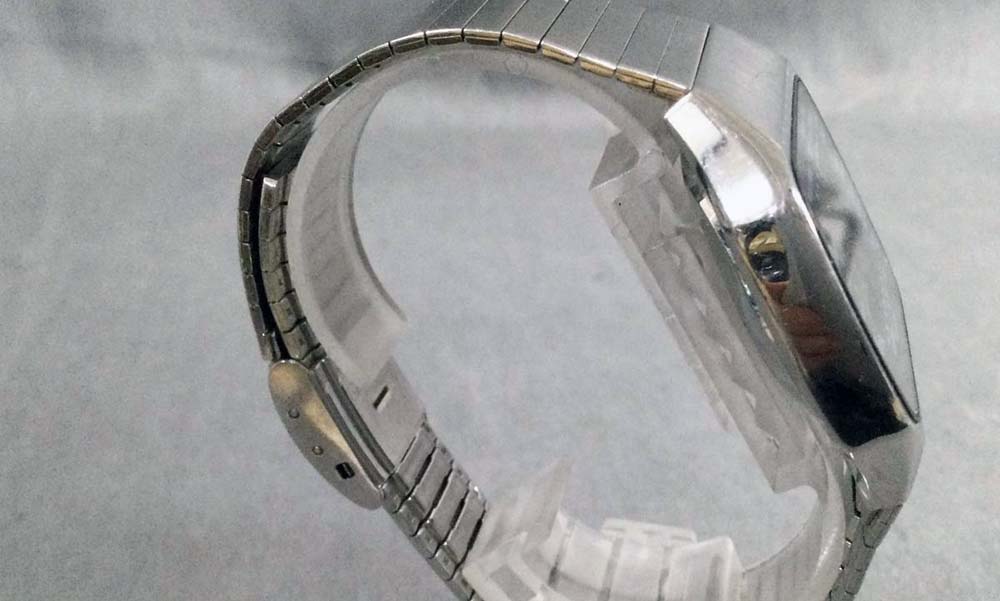
The M158-5009 Bracelet
The M158-5009 was offered on a three link bracelet in stainless steel or yellow/gold to match the watch case.
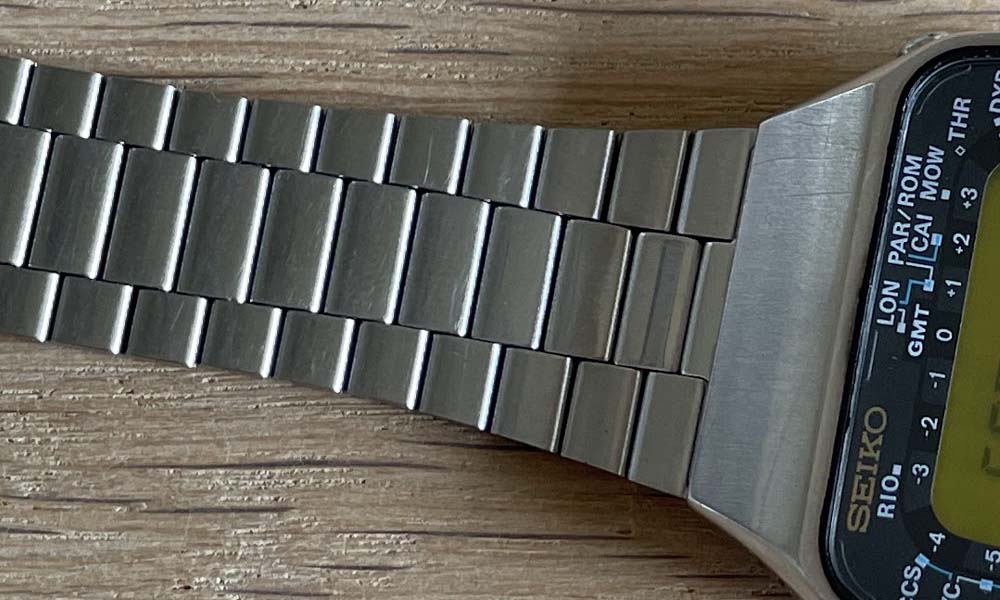
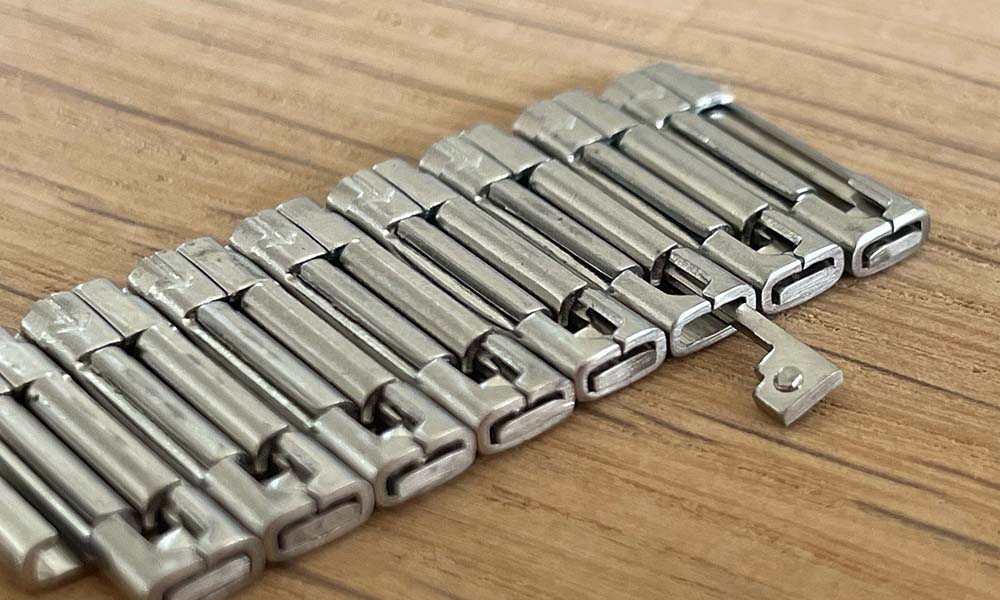
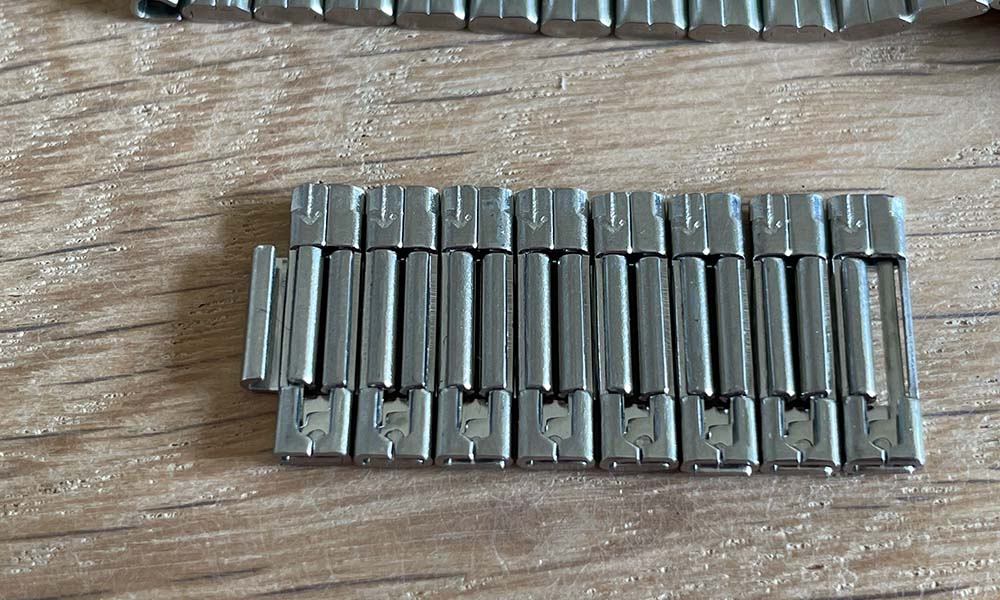
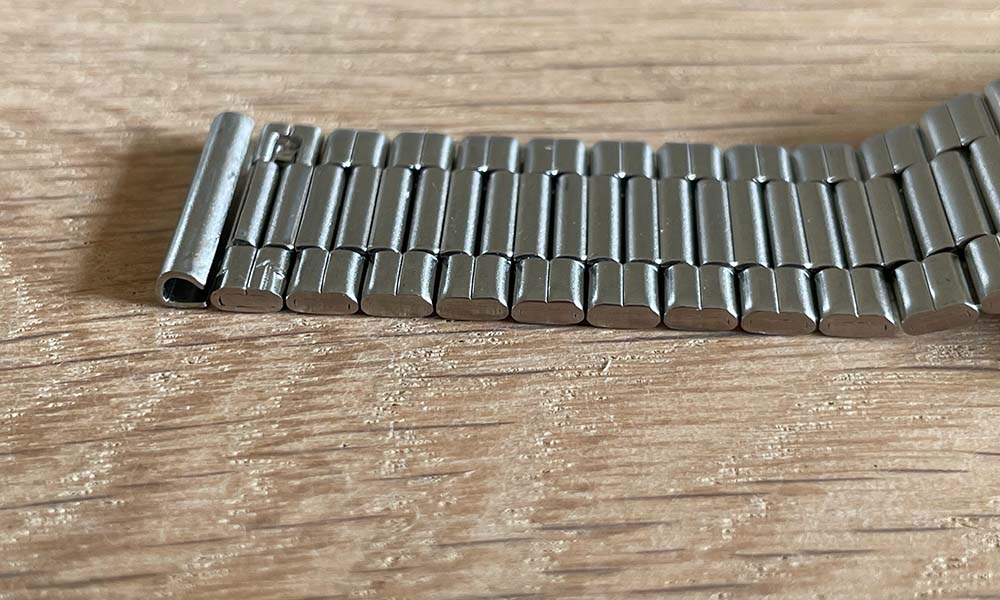
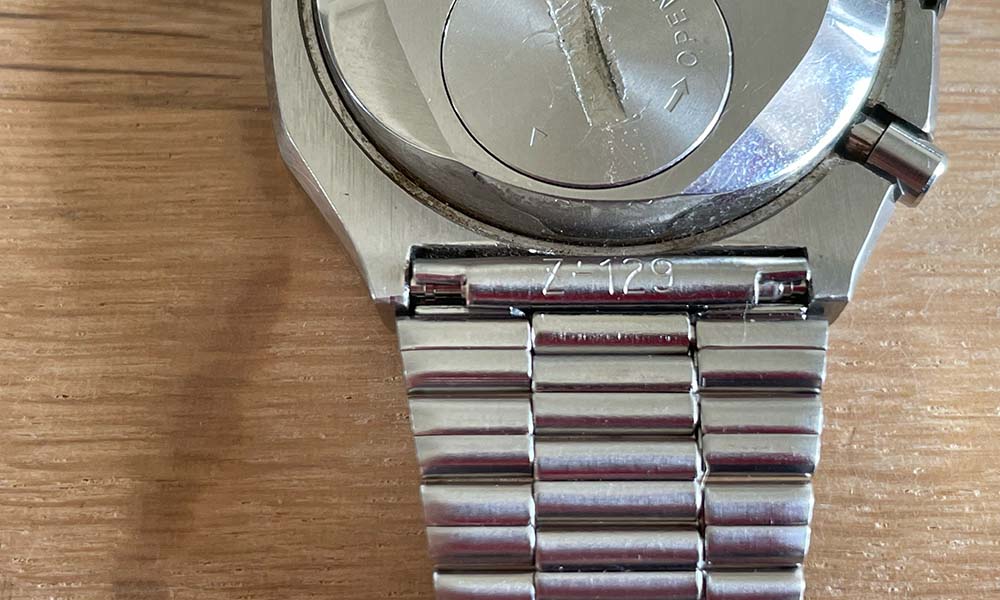
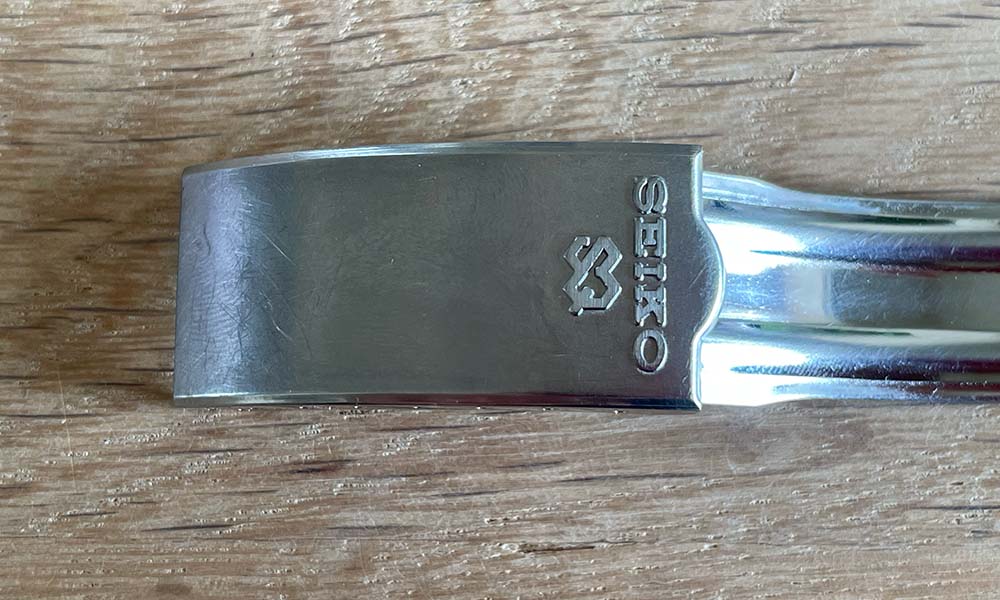
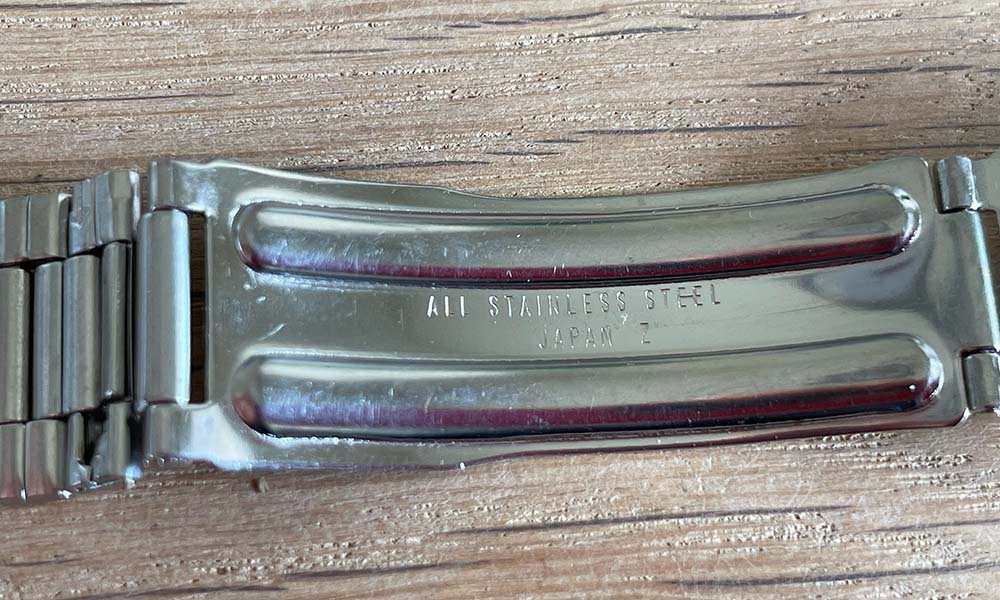
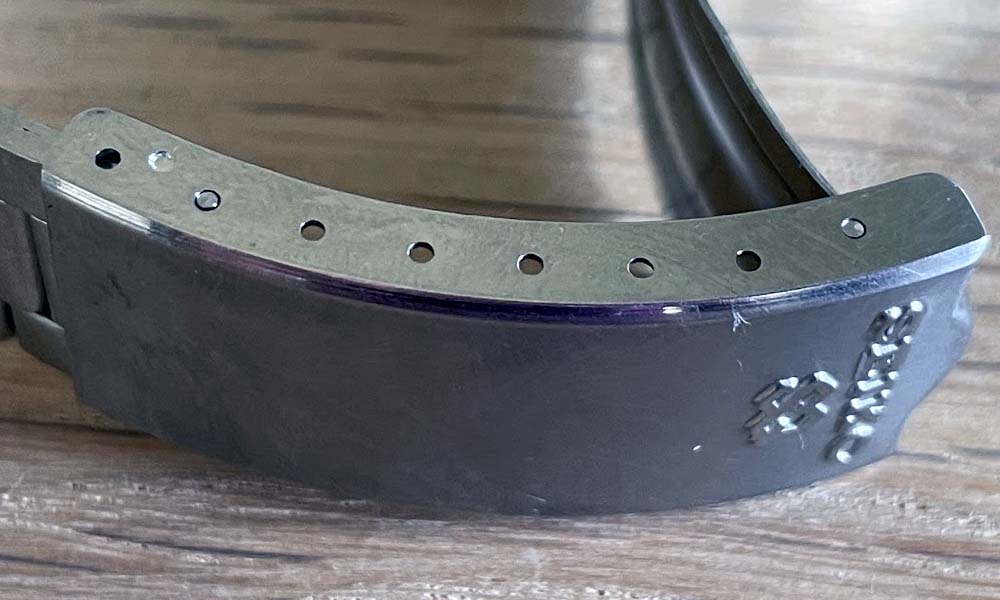
Production Numbers
Based on the image data collected to-date, this series appears to have been produced from April 1977 through January 1979. These models use a 6-digit serial number scheme, allowing for up to 9,999 watches per production month/year. Assuming a 21 month production run, this allows for a max production of 209,979 watches, with a minimum production of 45,020 based on current image data.
JDM (M158-5000) watches currently account for 33.93% of cataloged examples. North American Market (M158-5009) watches currently account for 66.07%.
Resale Value
Please note:
- This scale is a derivative of the Hagerty Classic Car Condition Rankings, adapted for watches. It is an attempt to keep it simple. They explain it really clearly here (albeit in car terms): Car Conditions: What The Numbers Mean.
- Almost no one owns or has even seen a condition 1 example of this watch in at least a few decades. Most of what is sold online today are condition 4 and 5 watches - if you think you have a gem, it is most likely a 3.
- While many enthusiasts spend inordinate amounts of time chasing down the best deal, digging through the dark corners of the internet, local antique shops and estate sales, and are ok fixing things up themselves... a lot of others would like to just know what a clean example is worth from a reputable source - that's what these are. Think of them as the price you would expect to pay if you saw one of these under the glass at your favorite local watch shop.
- All values assume OEM parts or all original examples. After market dials, mismatched bracelets etc will reduce the value, in some cases substantially. For example a non-original bracelet can reduce the overall value by 10-20%, a non-original dial may reduce resale value by 80% or more.
- Finally, gold-tone variations (these are not gold plated, but rather gold colored base metal) command a much lower resale value, from 50% to 80% less than equivalent examples in stainless steel.
| Rank | Description and Value |
|---|---|
1 |
Condition 1
A perfect original (NOS) that has been professionally serviced and where all components are functioning as new; also a watch that has been restored to current maximum professional standards of quality in every area, showing no signs of wear; a 95-plus point show piece that isn't worn.
|
2 |
Condition 2
Well-restored or a combination of superior restoration and excellent original, where any replacement parts are strictly OEM; also, an extremely well-maintained original showing very minimal wear, or NOS that has not been professionally serviced.
|
3 |
Condition 3
Completely operable original or "older restoration" showing wear; also, a good amateur restoration, all presentable and serviceable inside and out. Plus combinations of well-done restoration and good operable components or a partially restored watch with all parts necessary to complete a restoration and / or valuable NOS parts.
|
4 |
Condition 4
A wearable watch needing no work to be functional; also, a deteriorated restoration or a poor amateur restoration. All components may need restoration to be "excellent", but the watch is usable "as is".
|
5 |
Condition 5
Needs complete restoration; may or may not be running, but isn't rusted, wrecked or stripped to the point of being useful only for parts.
|
6 |
Condition 6
May or may not be running, but is weathered, wrecked and/or stripped to the point of being useful primarily for parts.
|
Other Resources
The Internet is littered with various documents about this watch. Here is a quick collection to save you some googling around.
- Jules Borel parts list for movement - M158A
- Jules Borel parts list for watch and case - M158-5009
- Jules Borel parts list for watch and case - M158-5000
Video on how to use the watch
There are a few helpful how-to videos on YouTube. Here's one of them.
Related Articles

Counterfeits and Copies of The Seiko M158 PAN AM
As the saying goes, imitation is the highest form of flattery. And the SEIKO M158 had quite a few admirers.
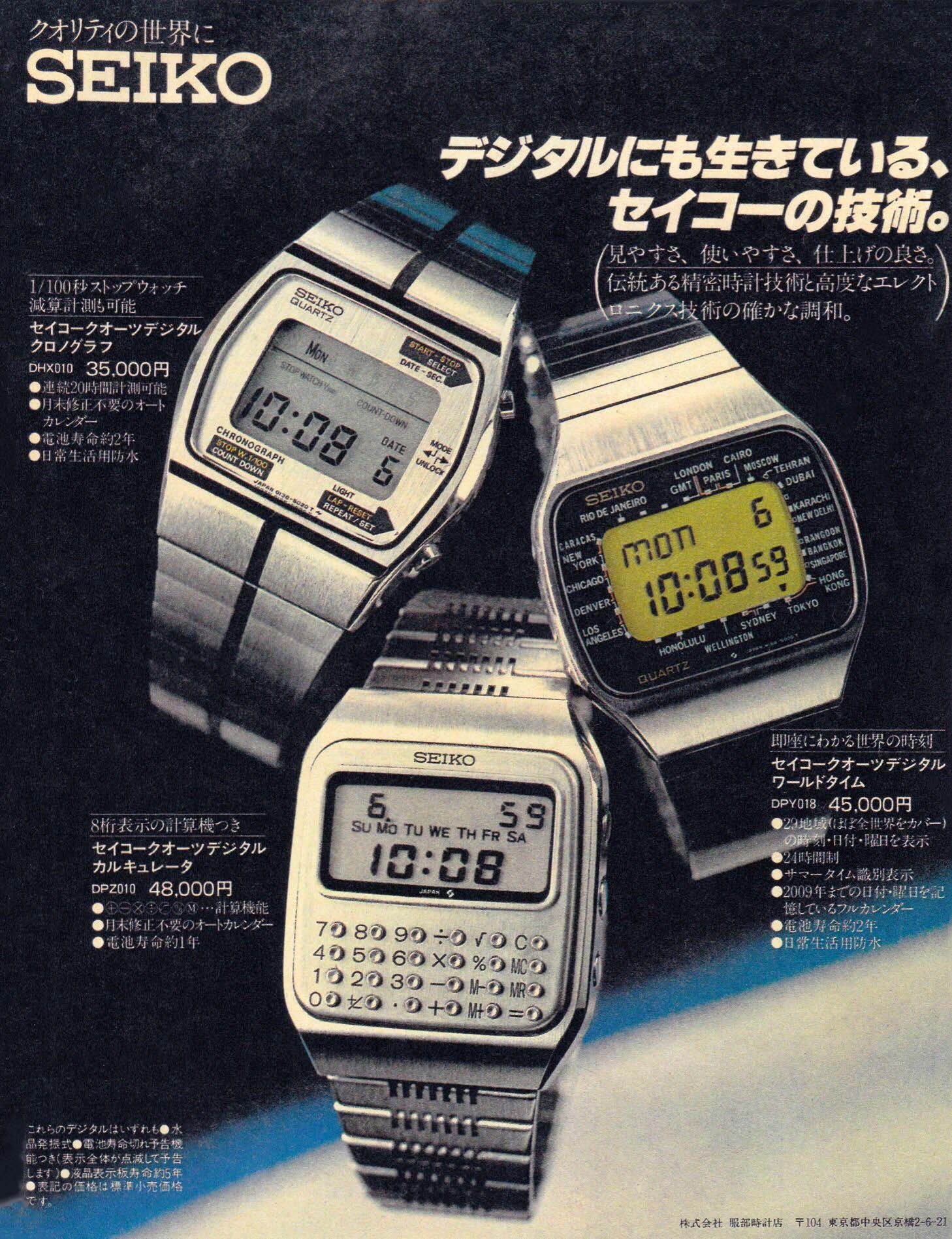
Old Ad Scans: Seiko World Time M158-500X
A small collection of ad and catalog scans of the SEIKO World Time M158-500X

Authenticating The Seiko World Time M158-500X
Tips on confirming the originality of your Seiko World Time M158-5000 and M158-5009
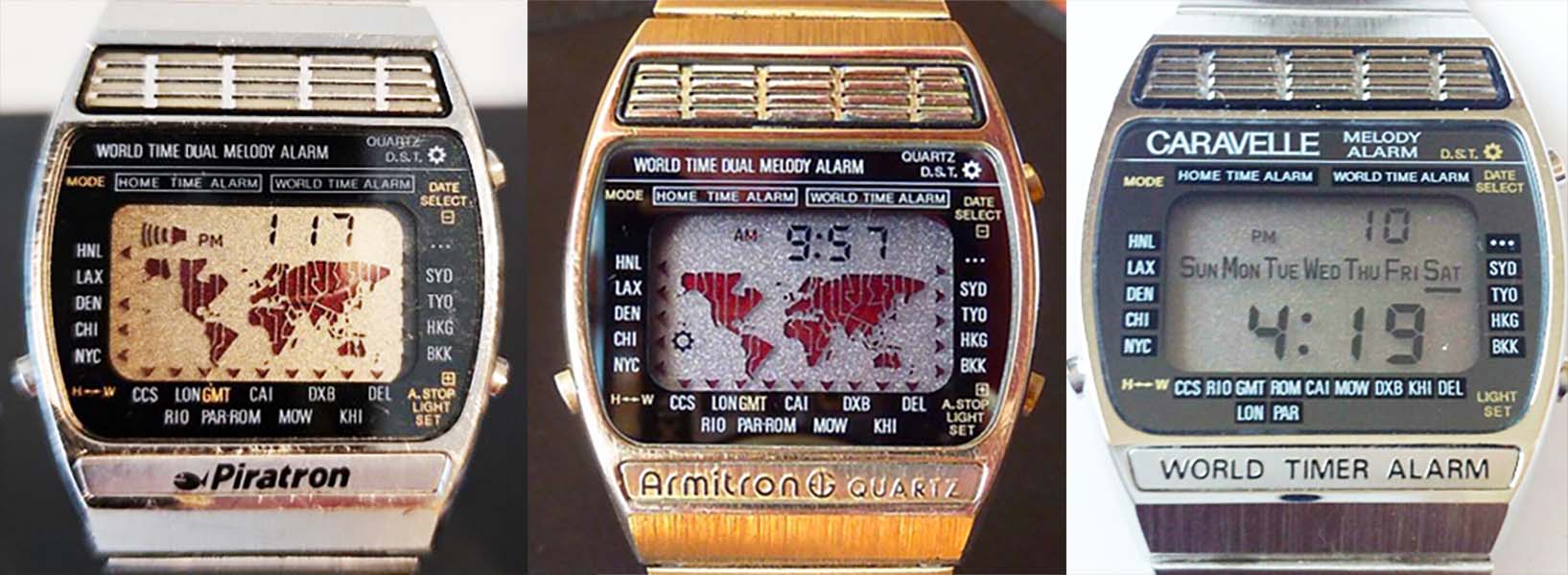
Counterfeits and Copies of The Seiko A239
As the saying goes, imitation is the highest form of flattery. And the SEIKO A239 had quite a few admirers.
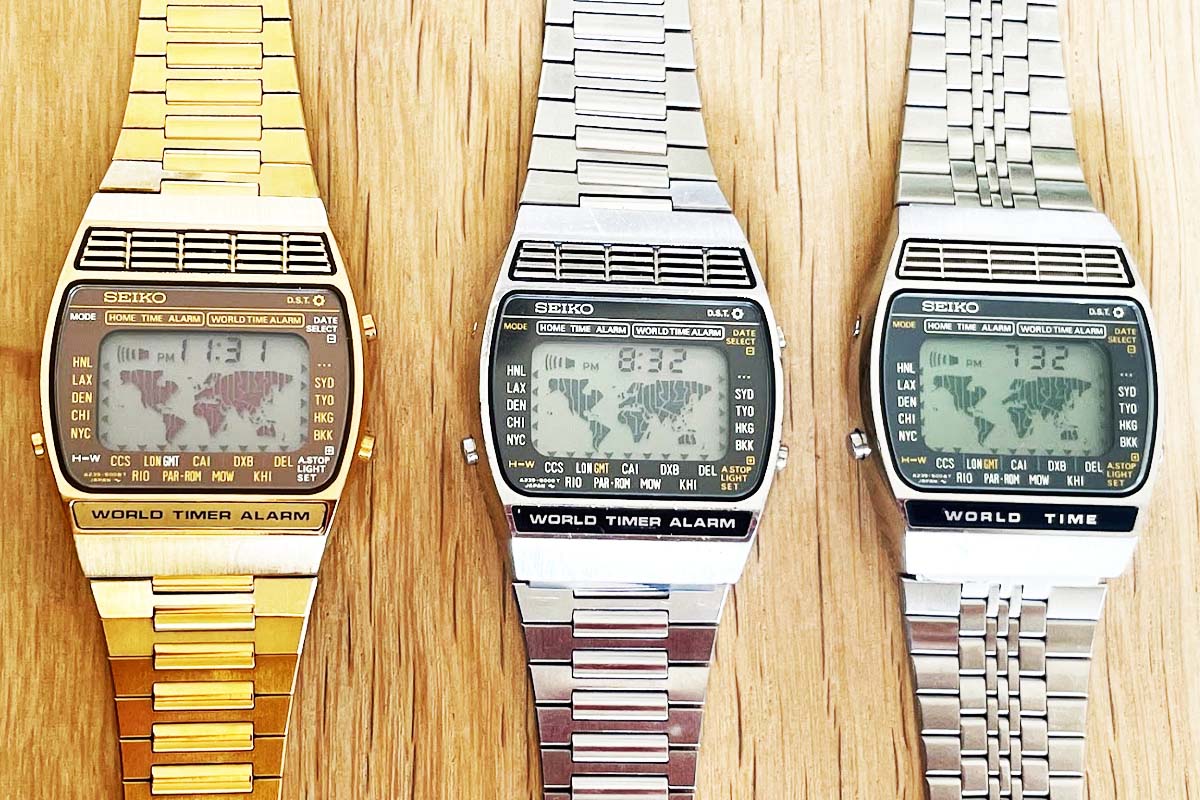
The Seiko World Time A239-50XX - The Atlas
All about the 3rd series of digital LCD world time watch from SEIKO, produced in 1979
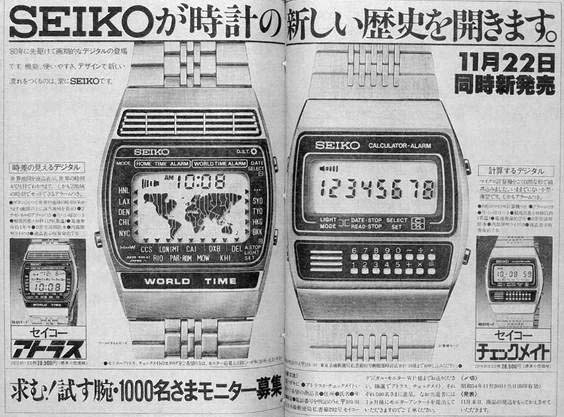
Old Ad Scans: Seiko World Time A239-50XX
A small collection of ad and catalog scans of the SEIKO World Time A239-50XX
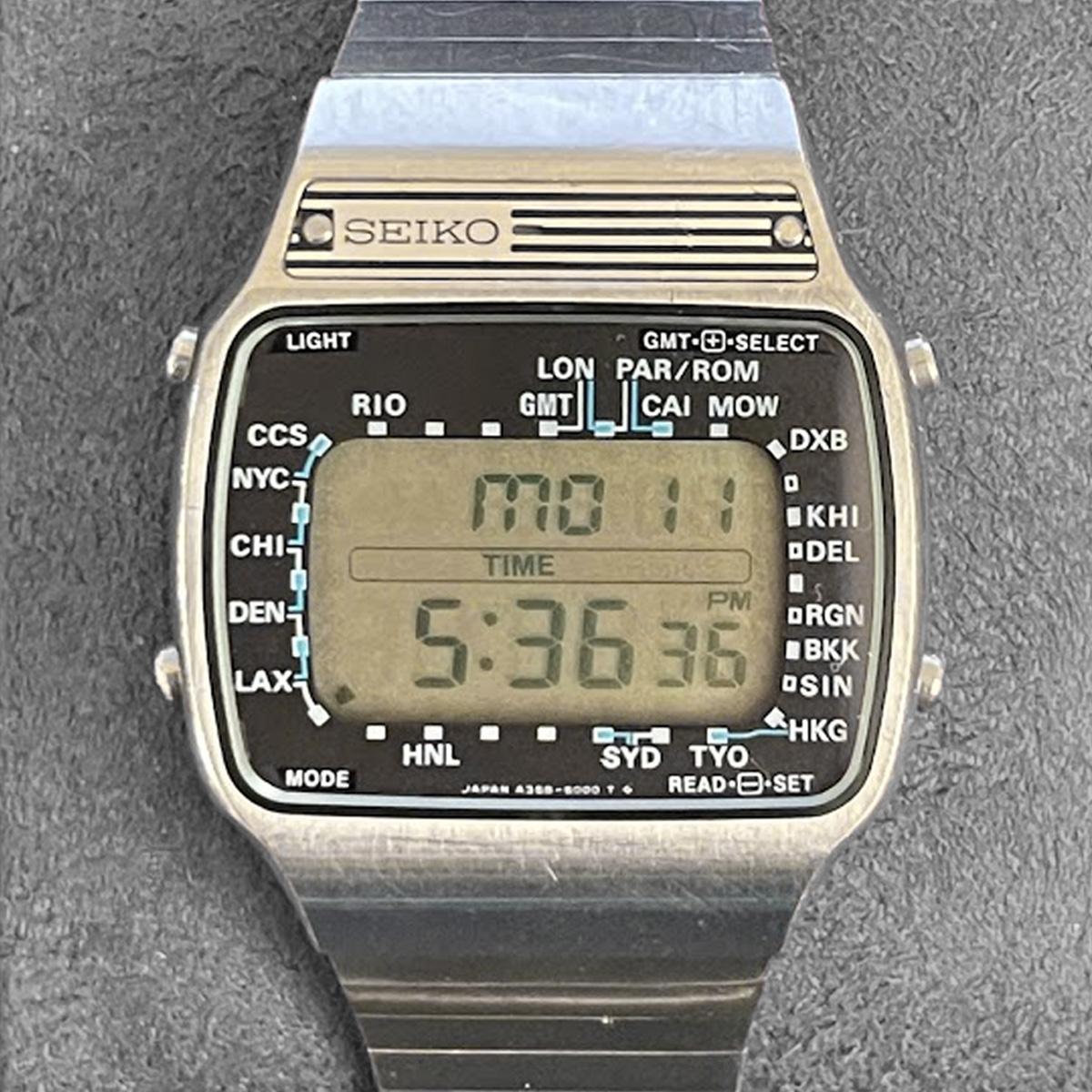
The Seiko World Time A358-500X - The Alarm
All about the 2nd series of digital LCD world time watch from SEIKO, produced in 1979
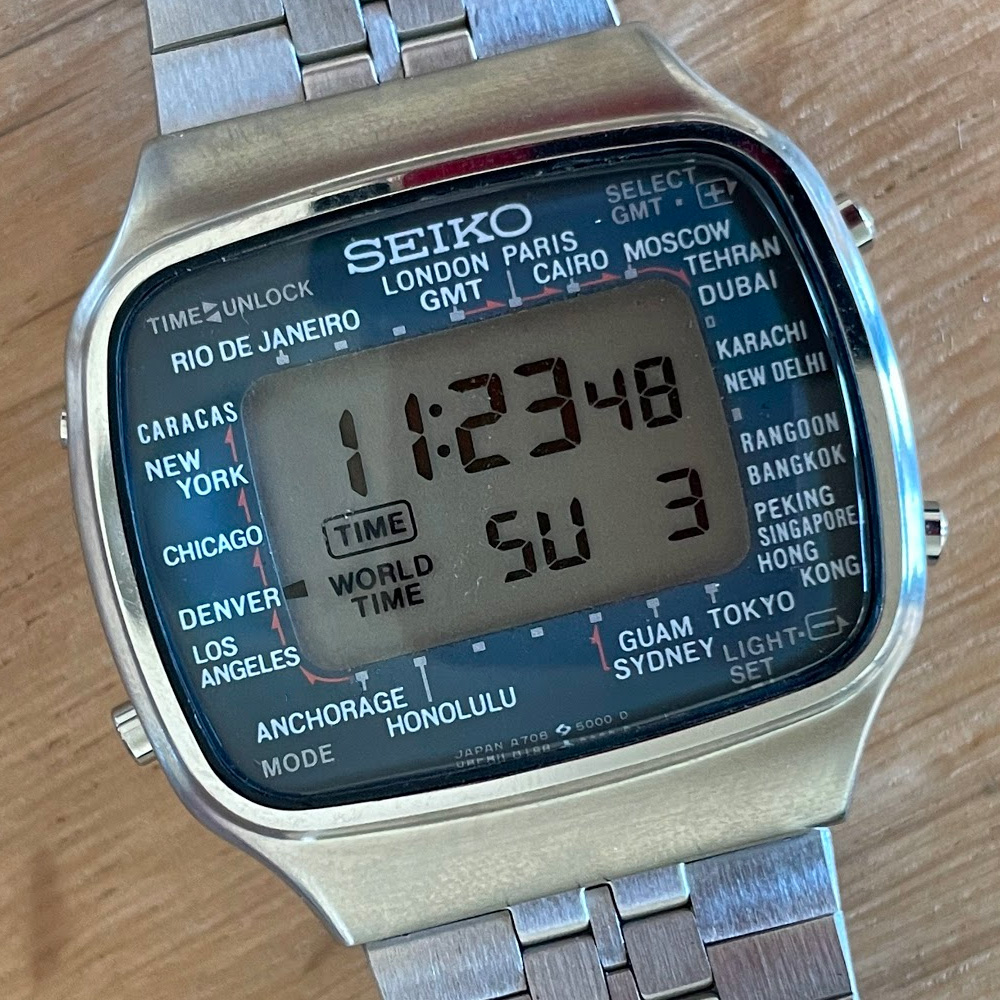
The Seiko World Time A708-5000 - The TWA
All about the 4th series of digital LCD world time watch from SEIKO, produced from 1984 through 1988

The Seiko World Time A718-5010 - The Frankenstein
All about the A718-5010 digital LCD world time watch from SEIKO, produced in 1984

The Seiko World Time A718-5030 - The John Cleese
All about the A718-5030 digital LCD world time watch from SEIKO, produced in 1984
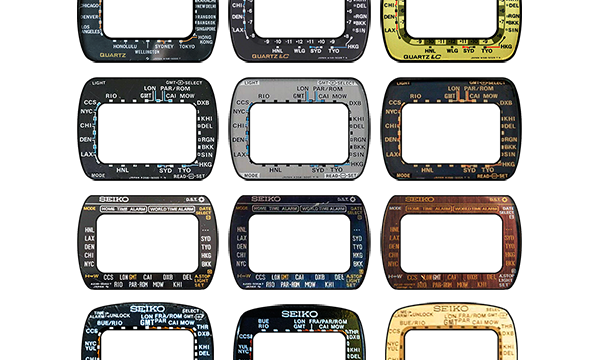
Reference Cities - Changes over the Years
A history of changes to the Cities Dial Frames on SEIKO World Time digital watches from 1977 through 1988
